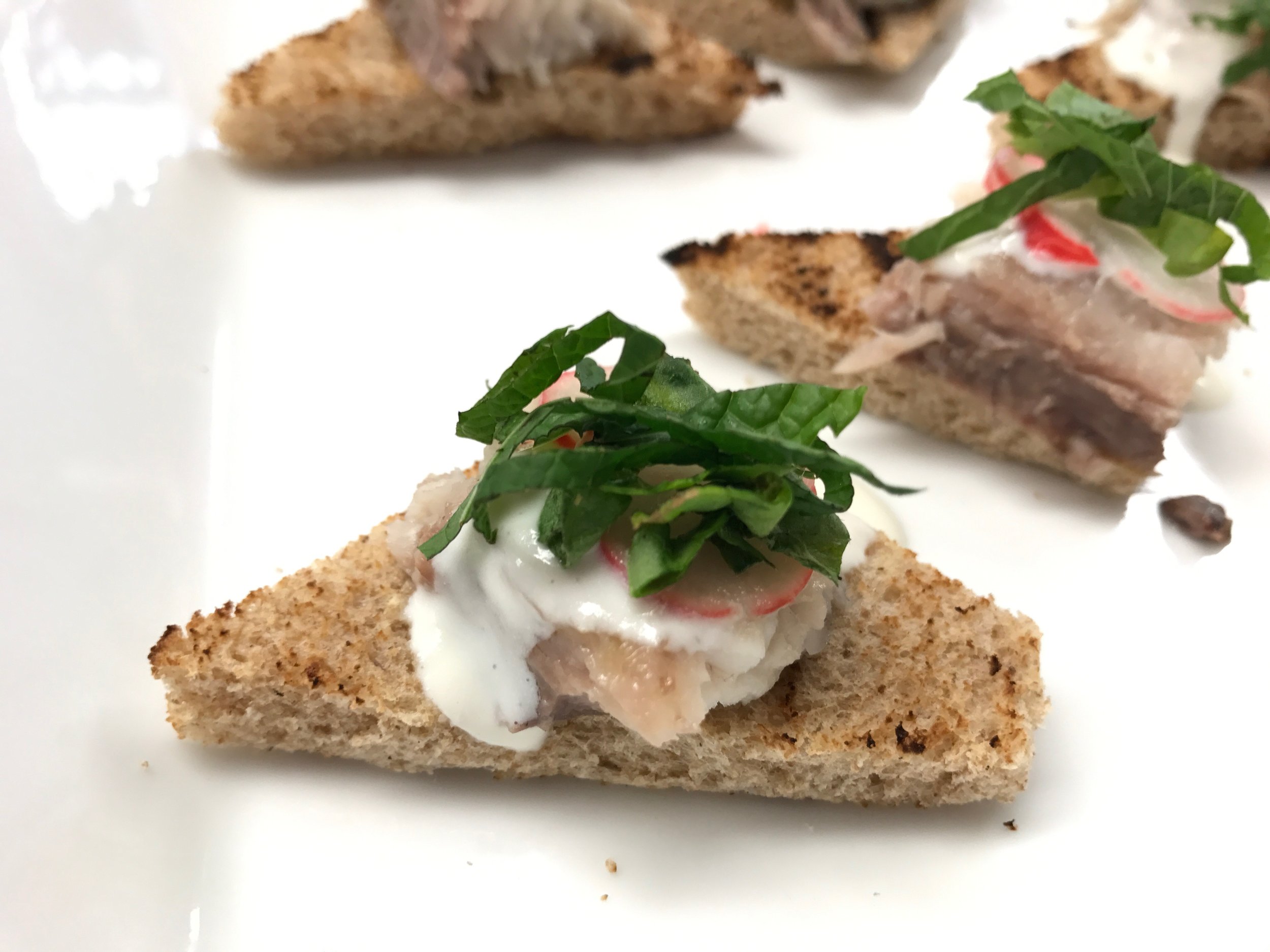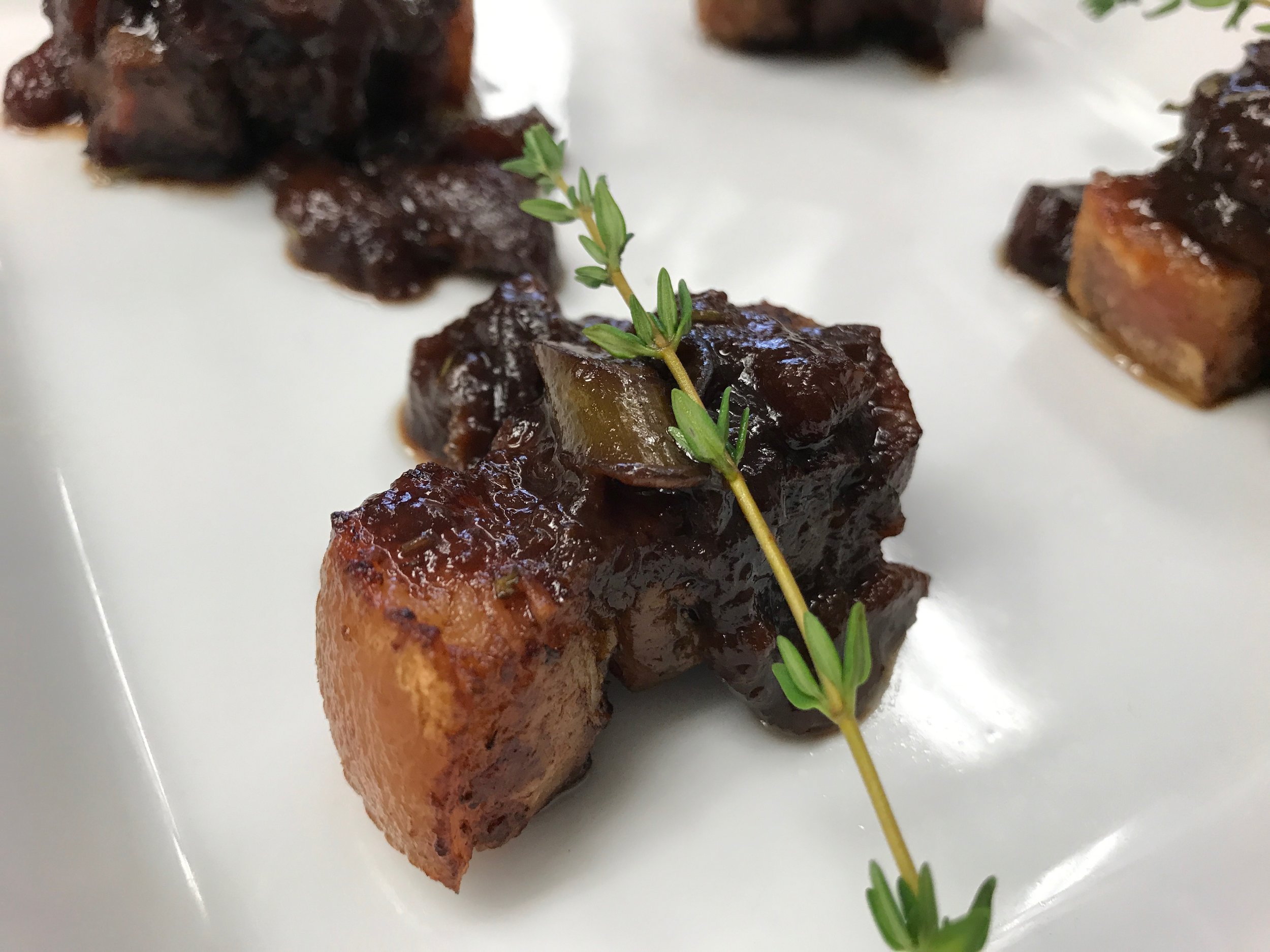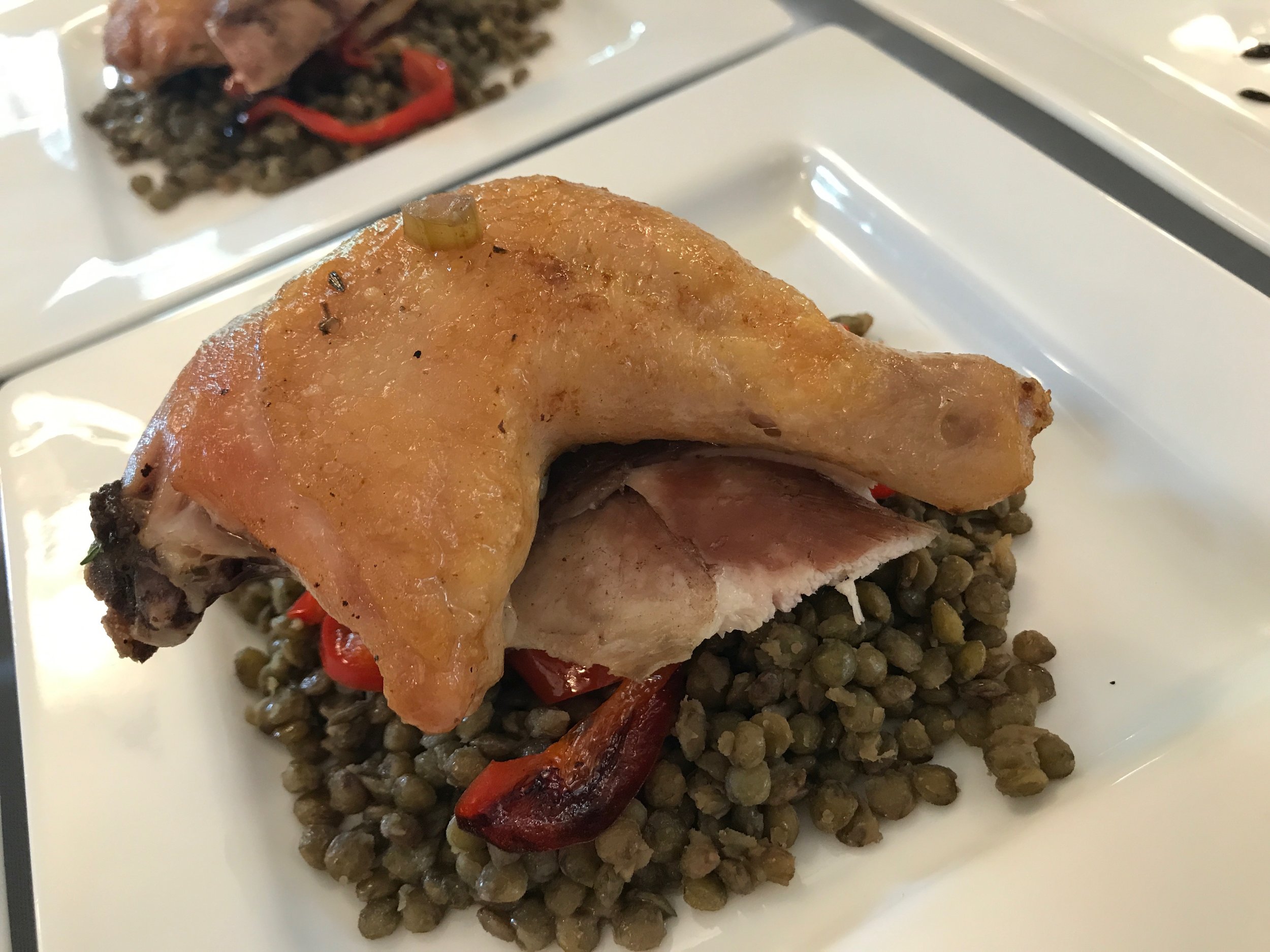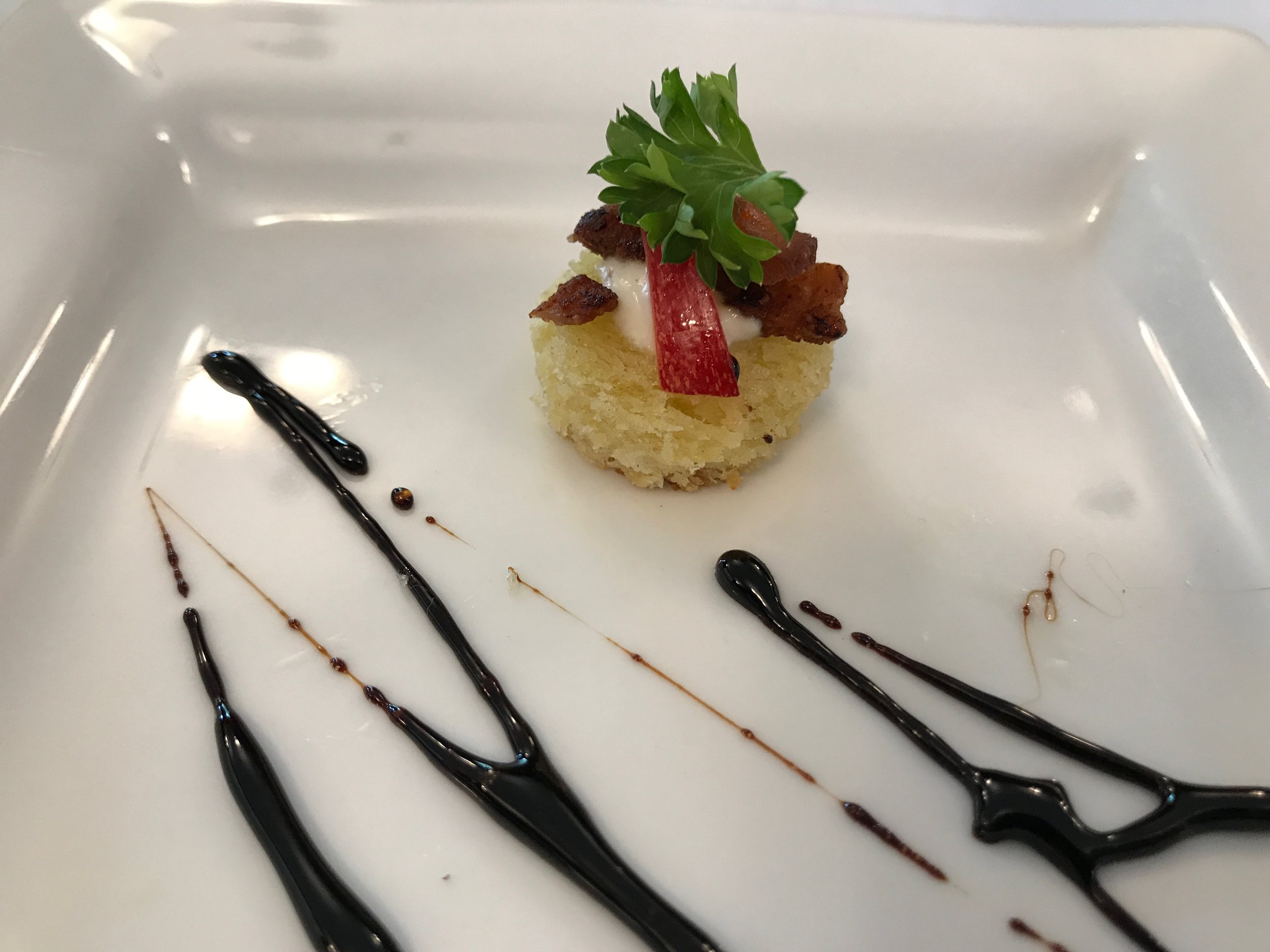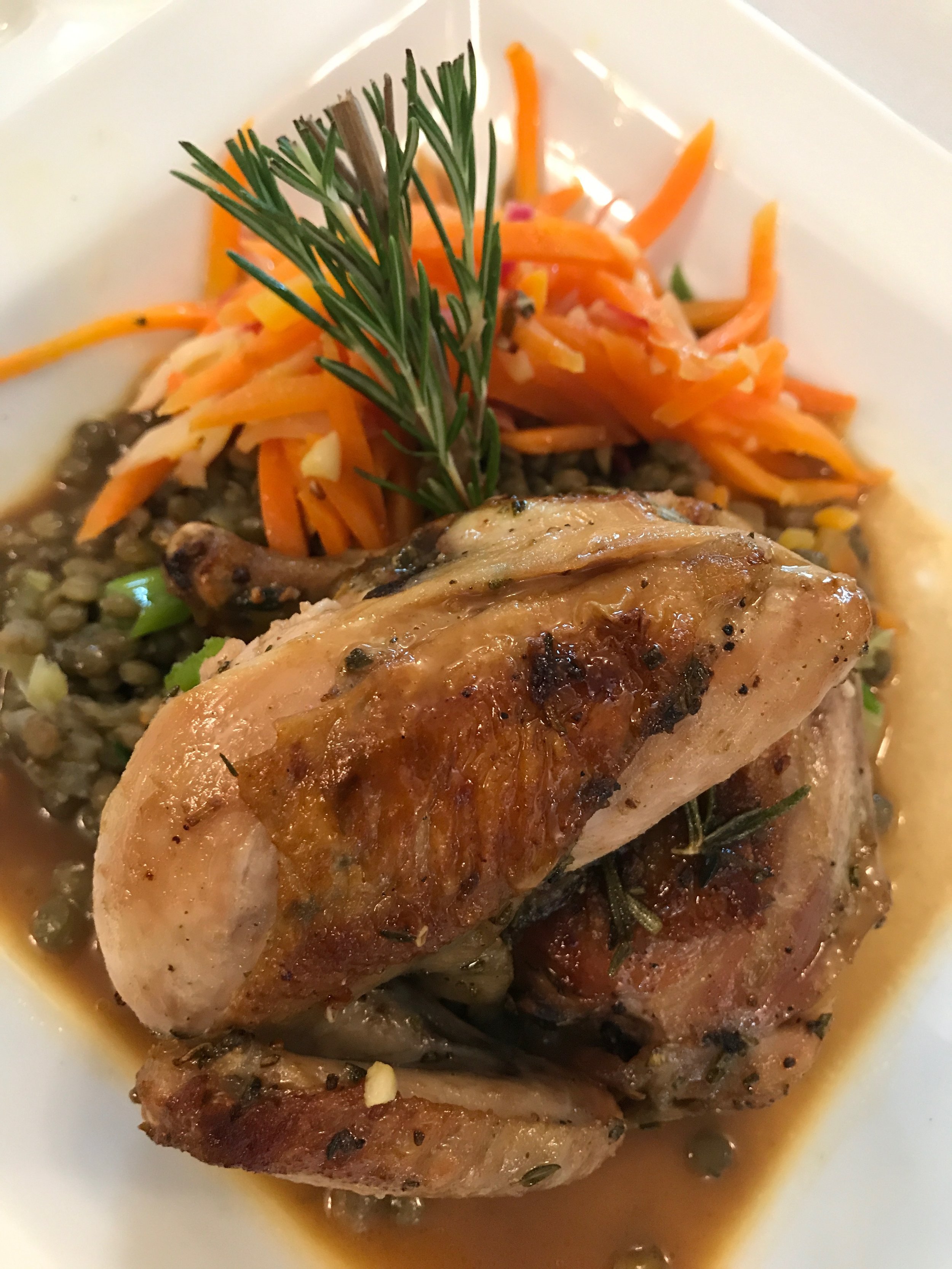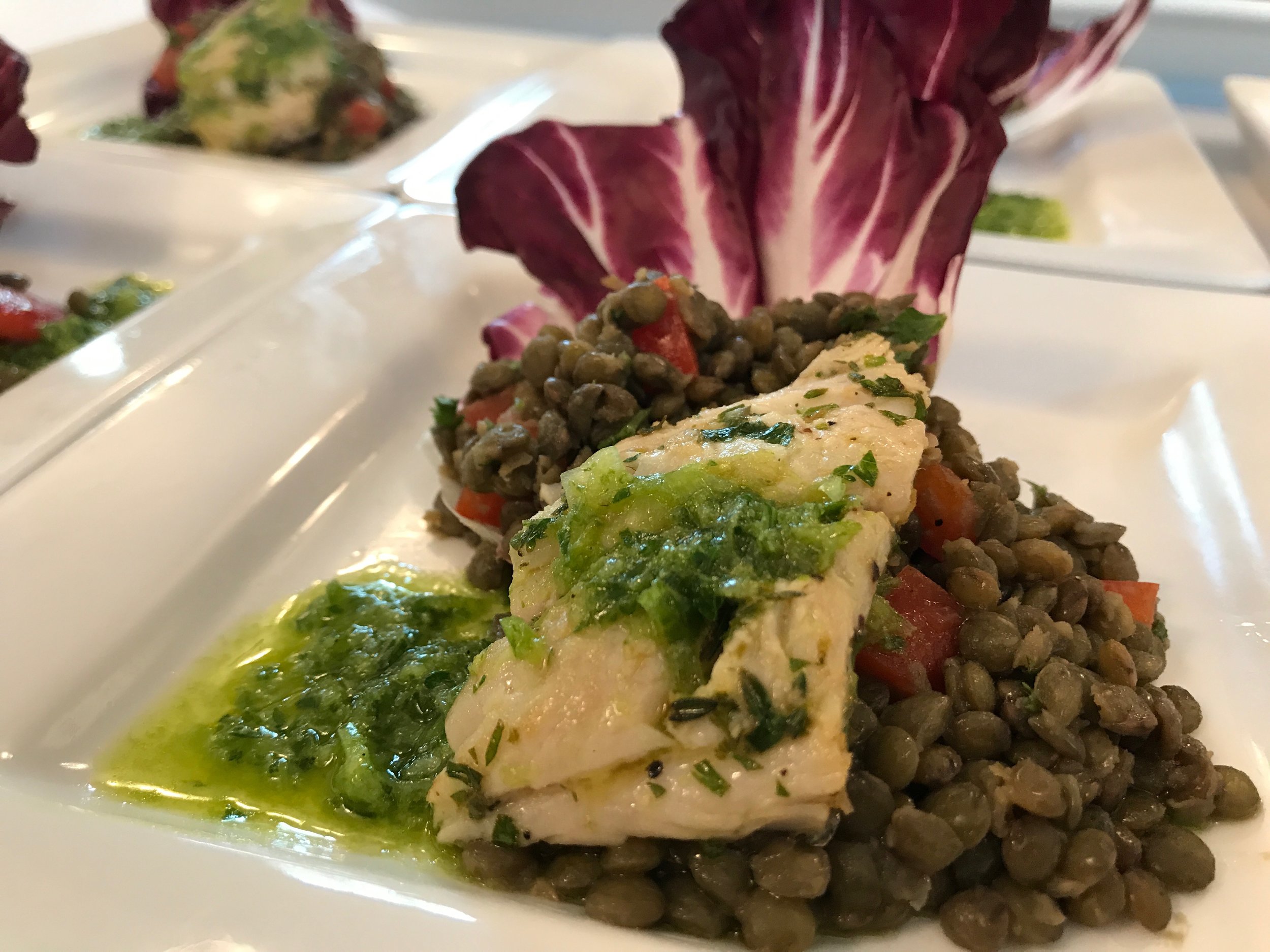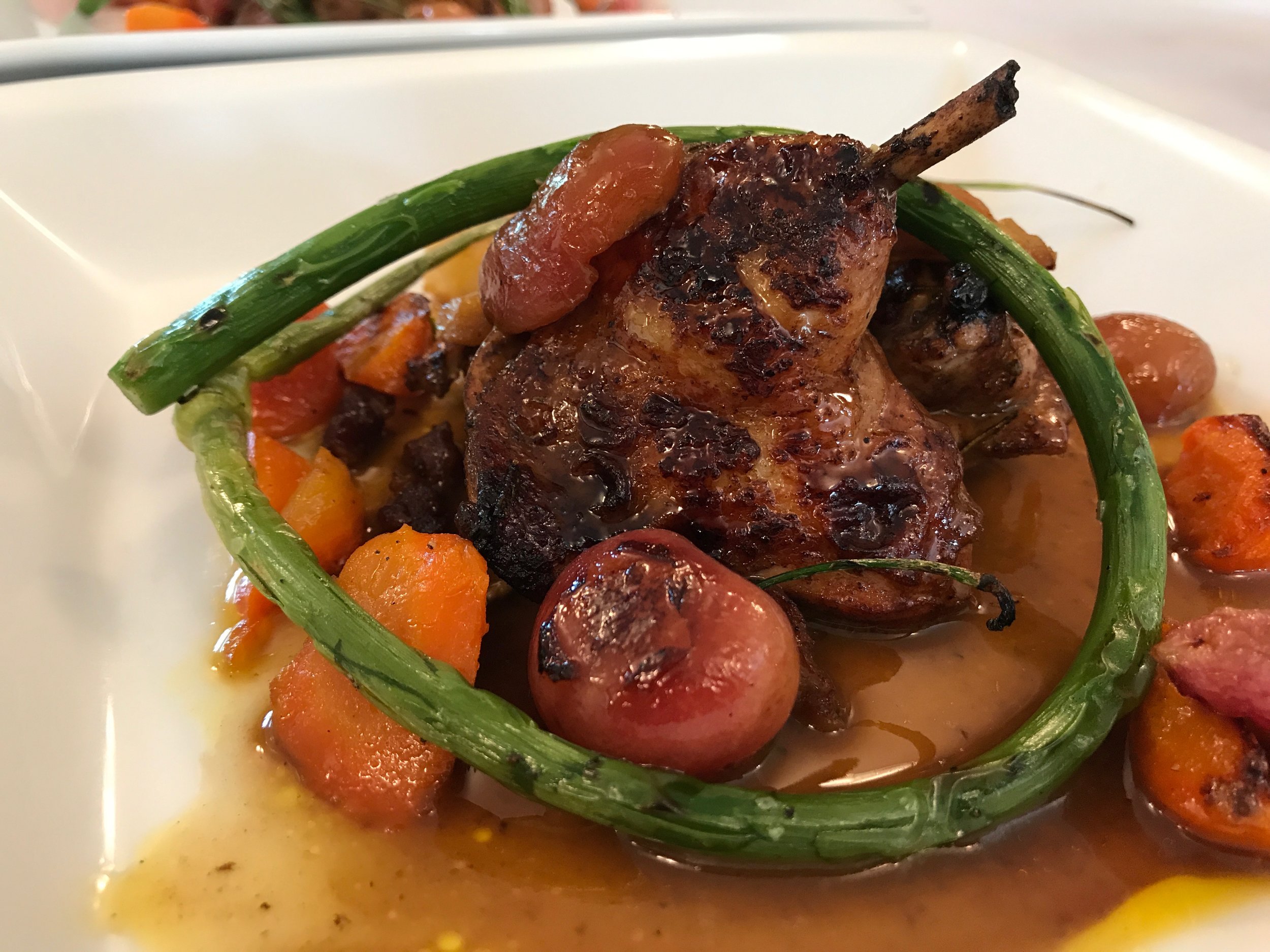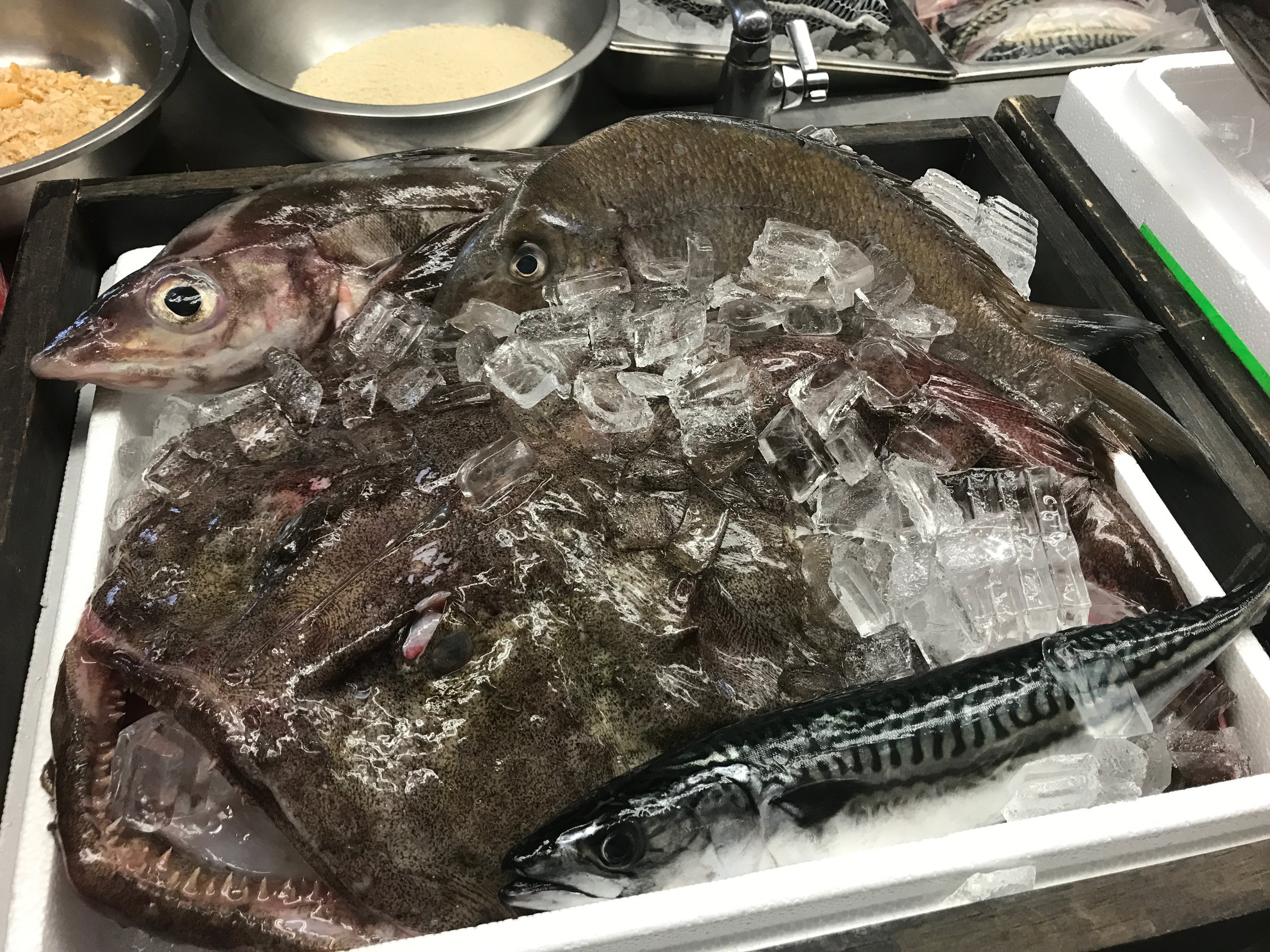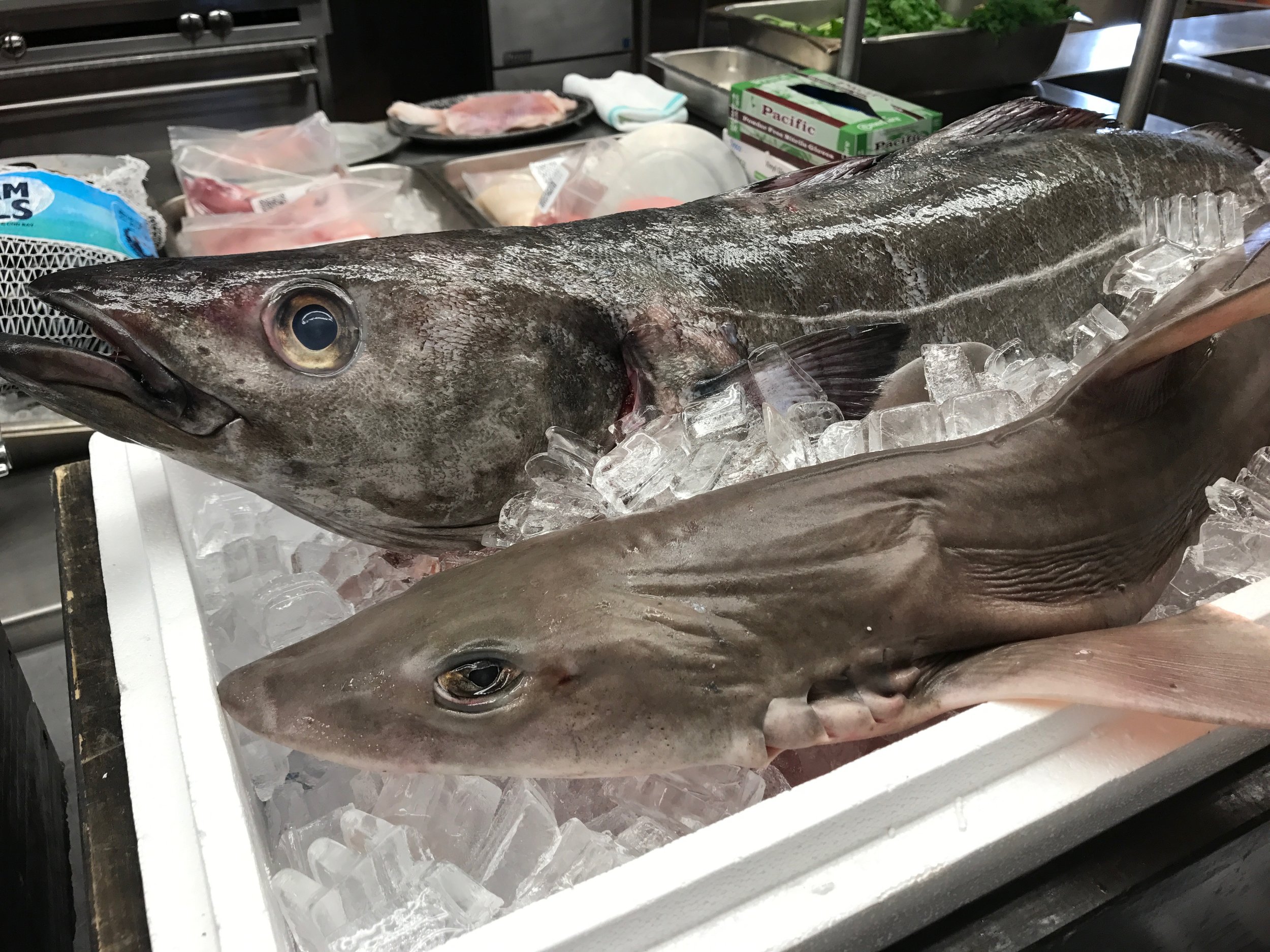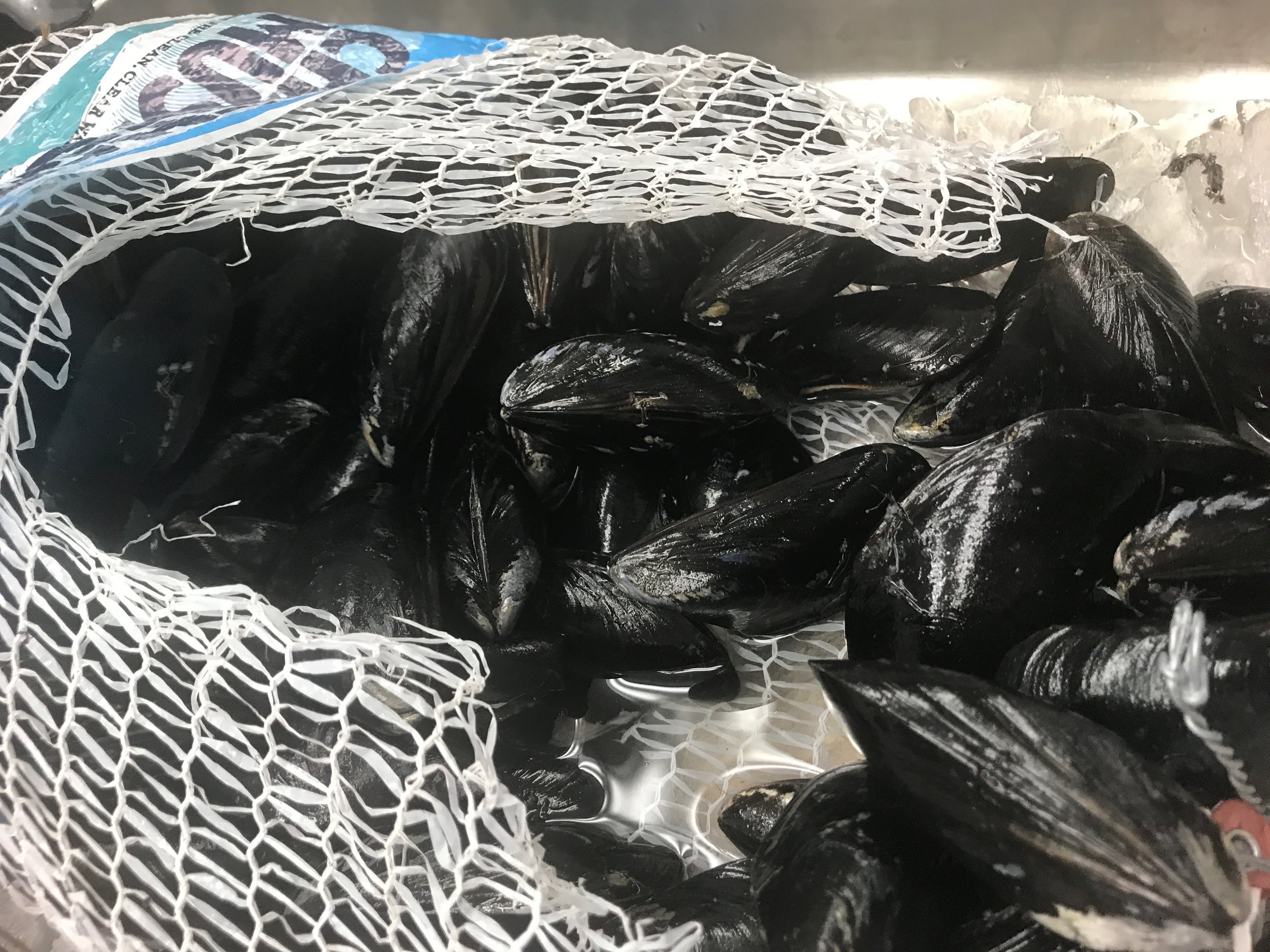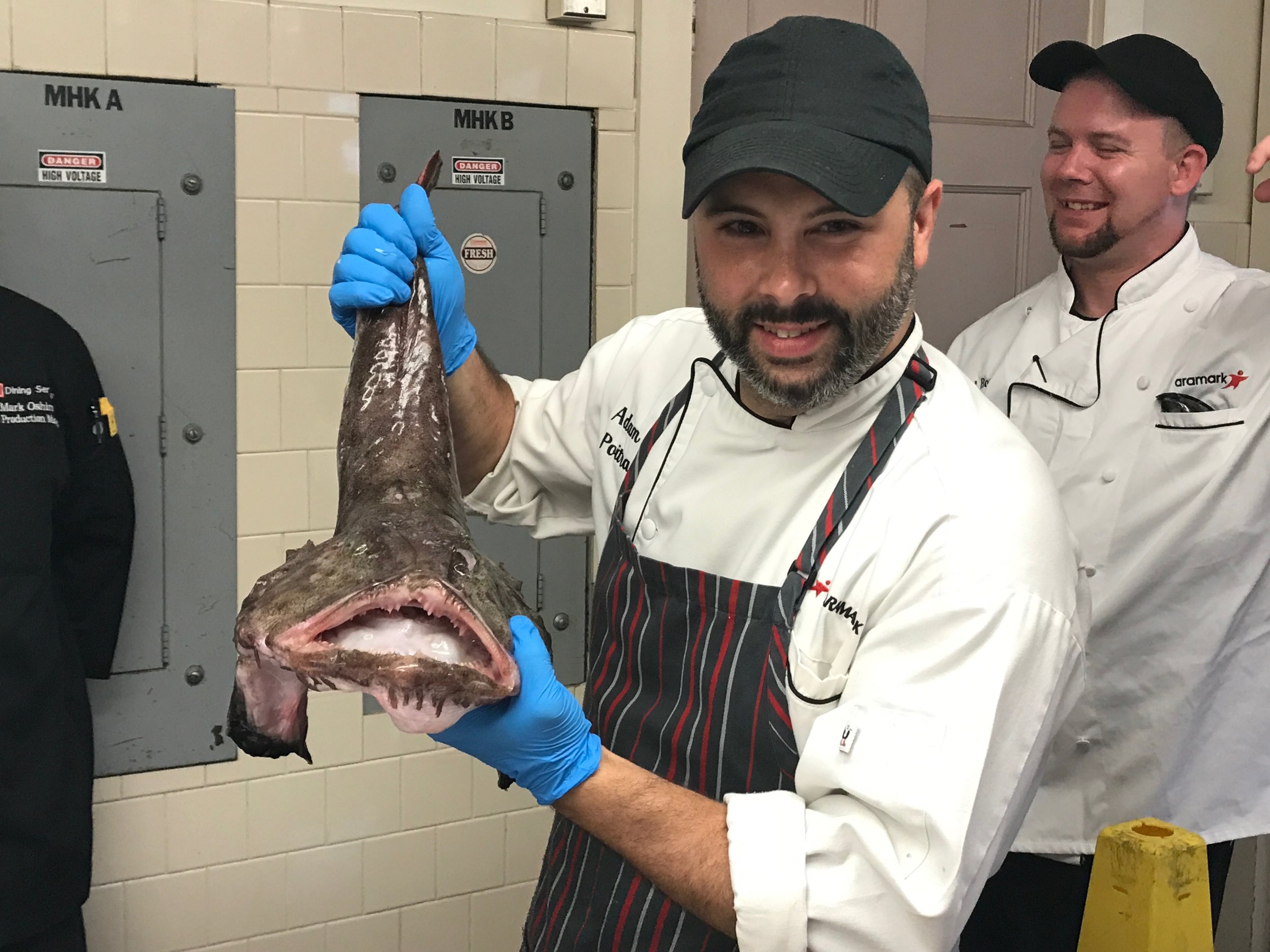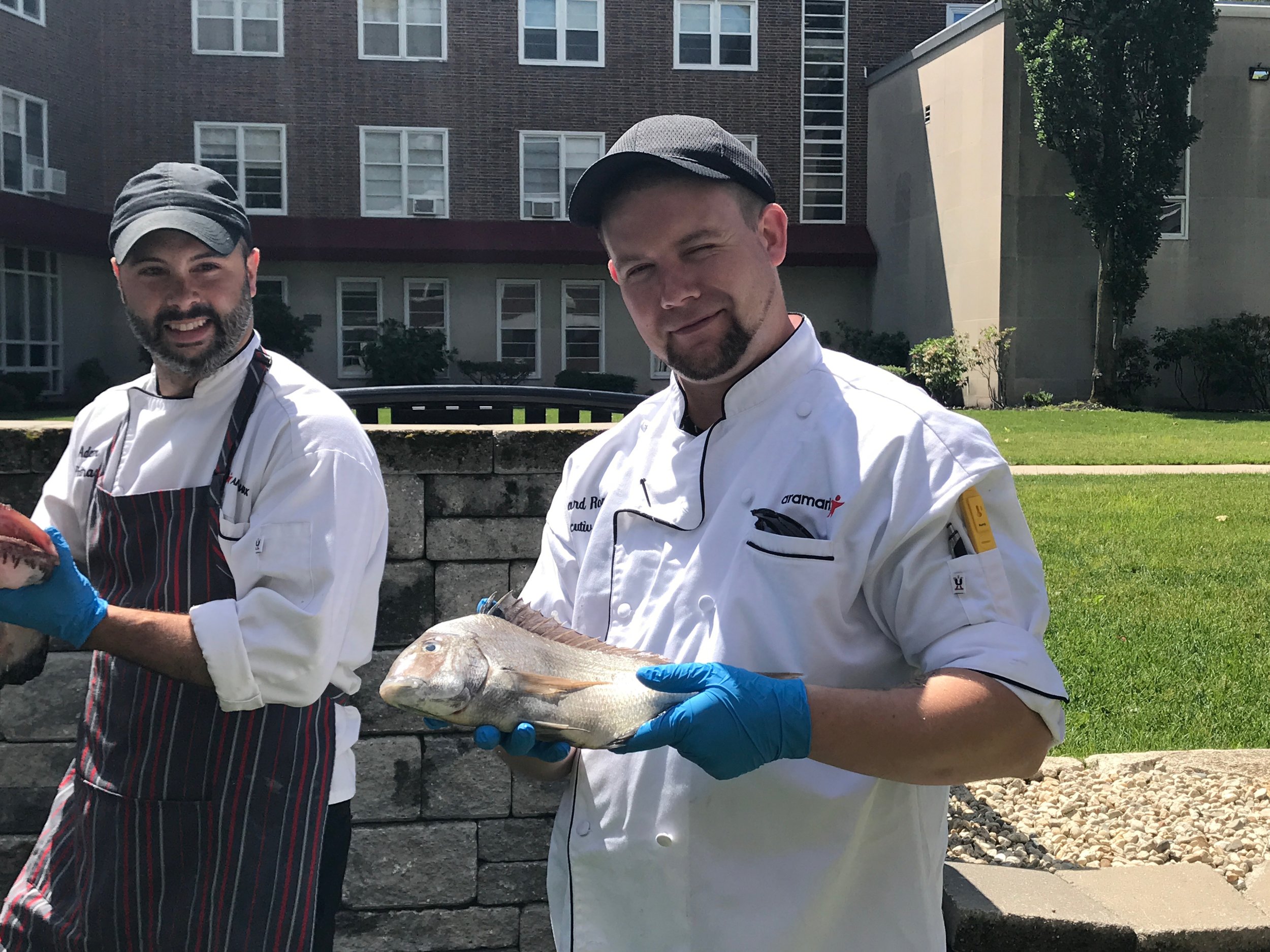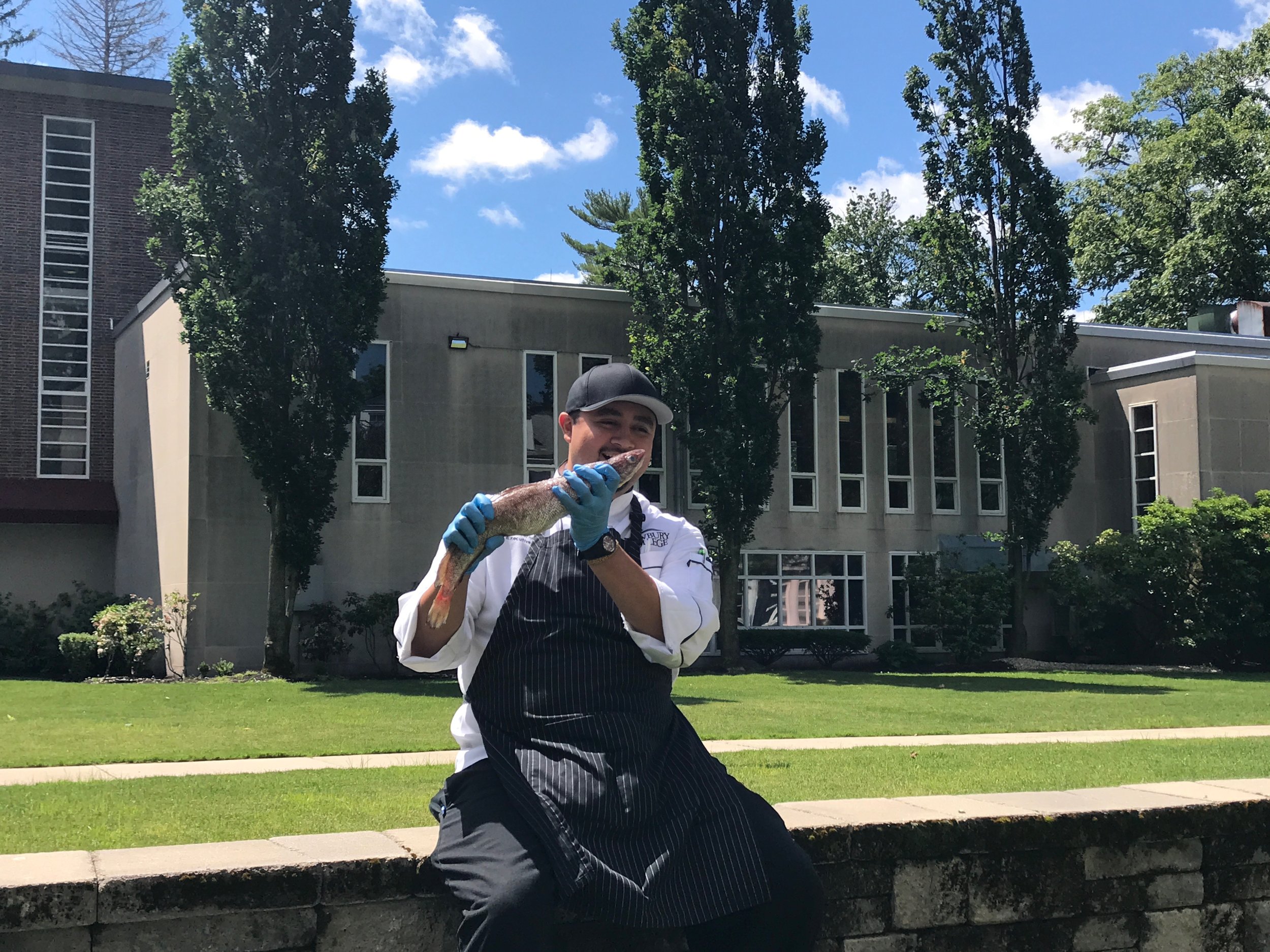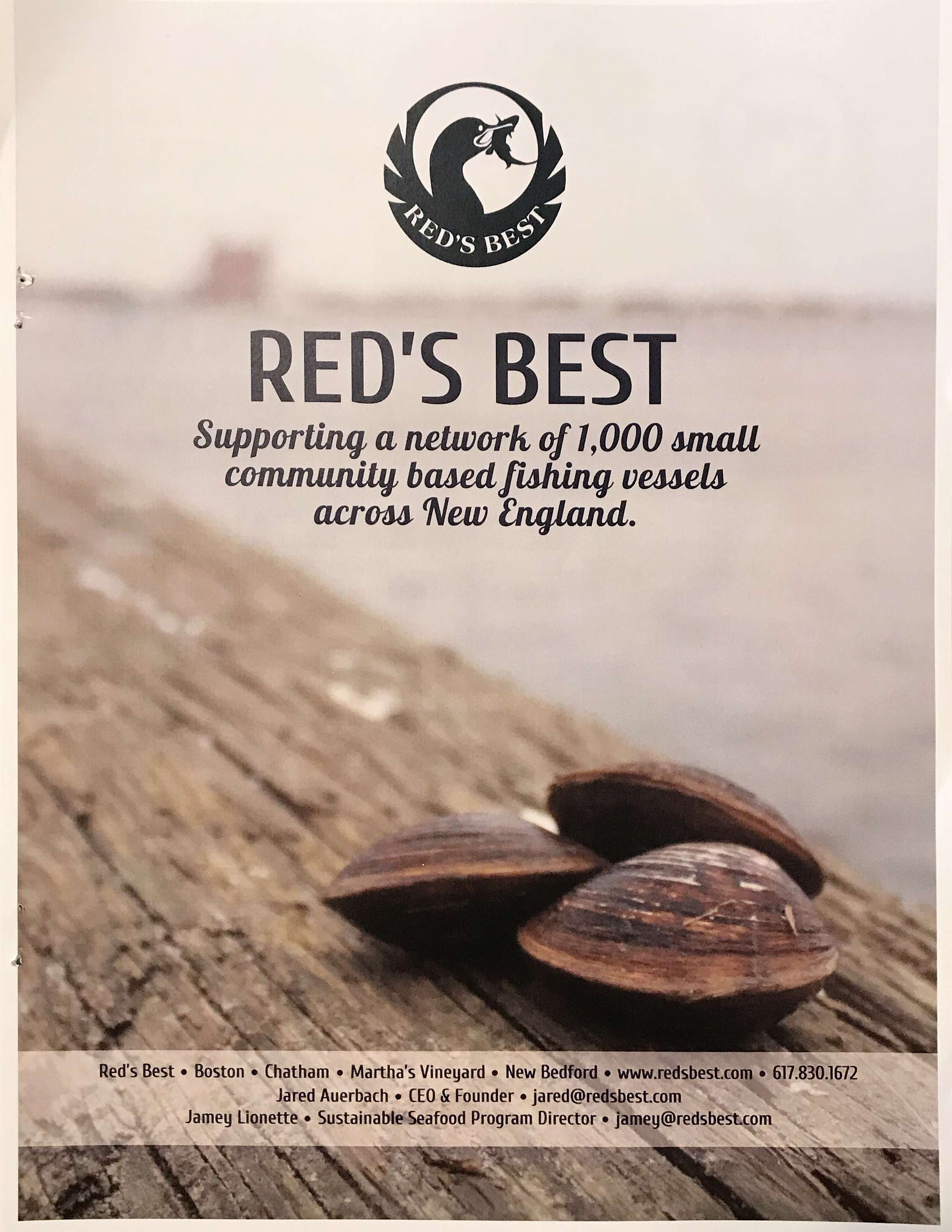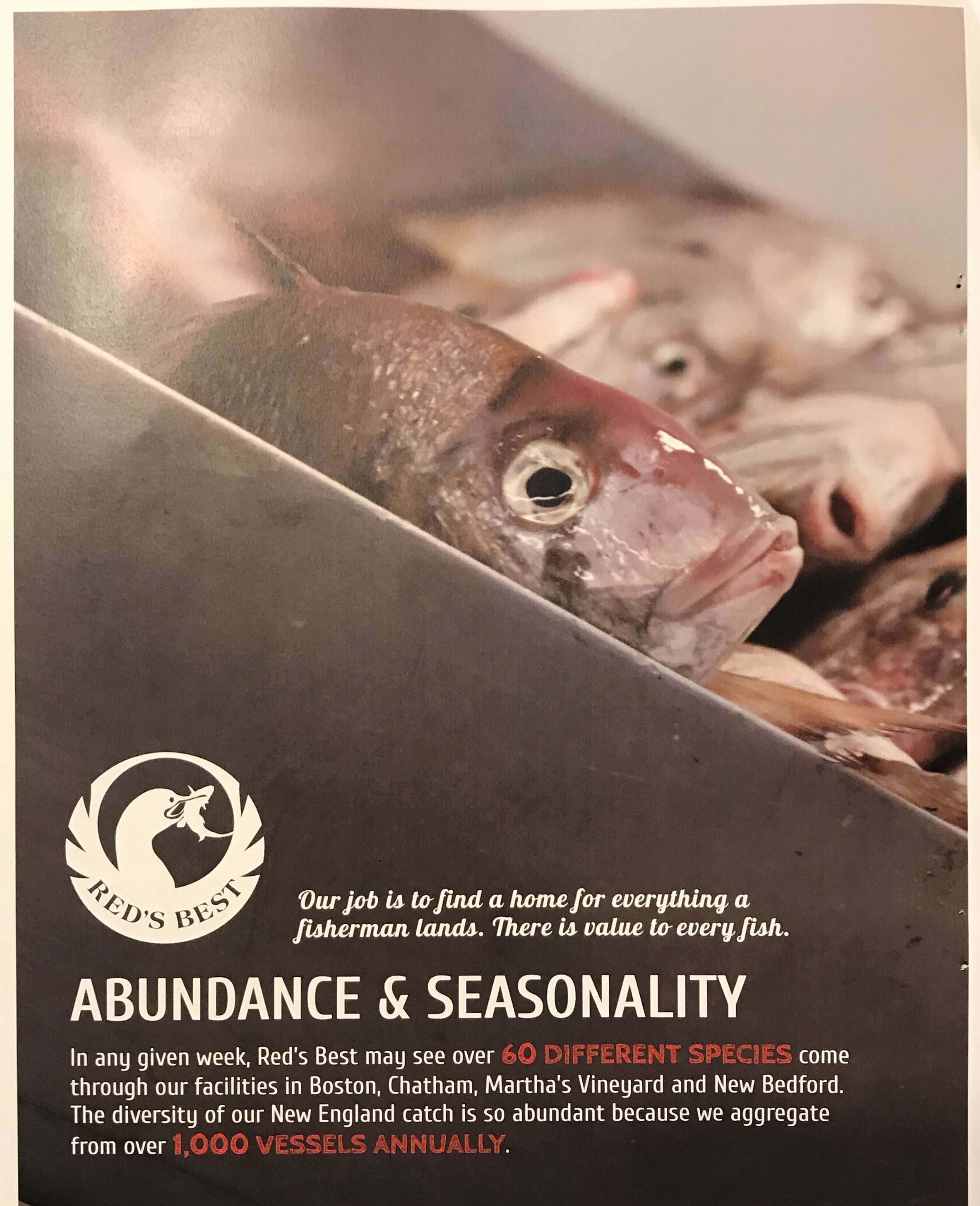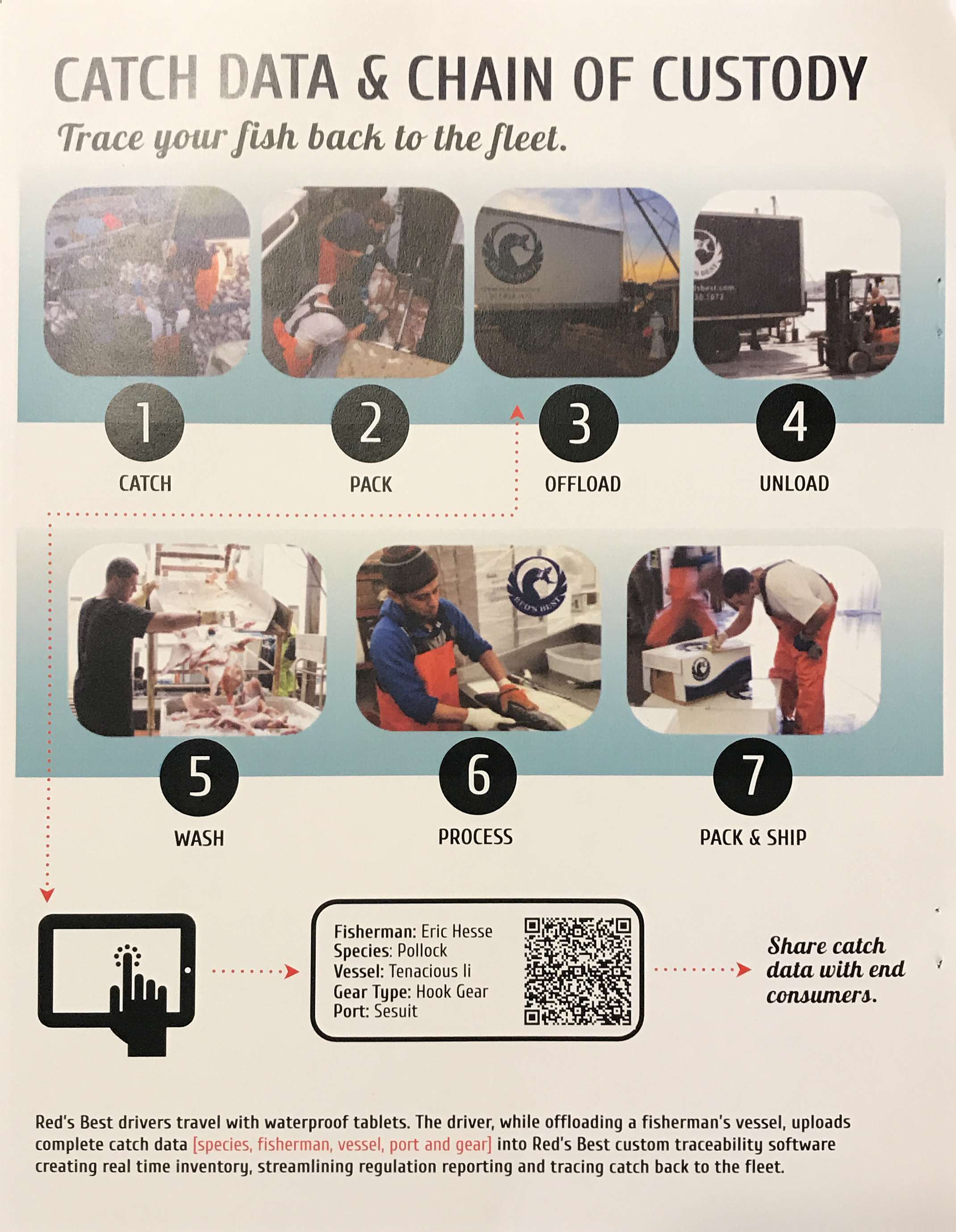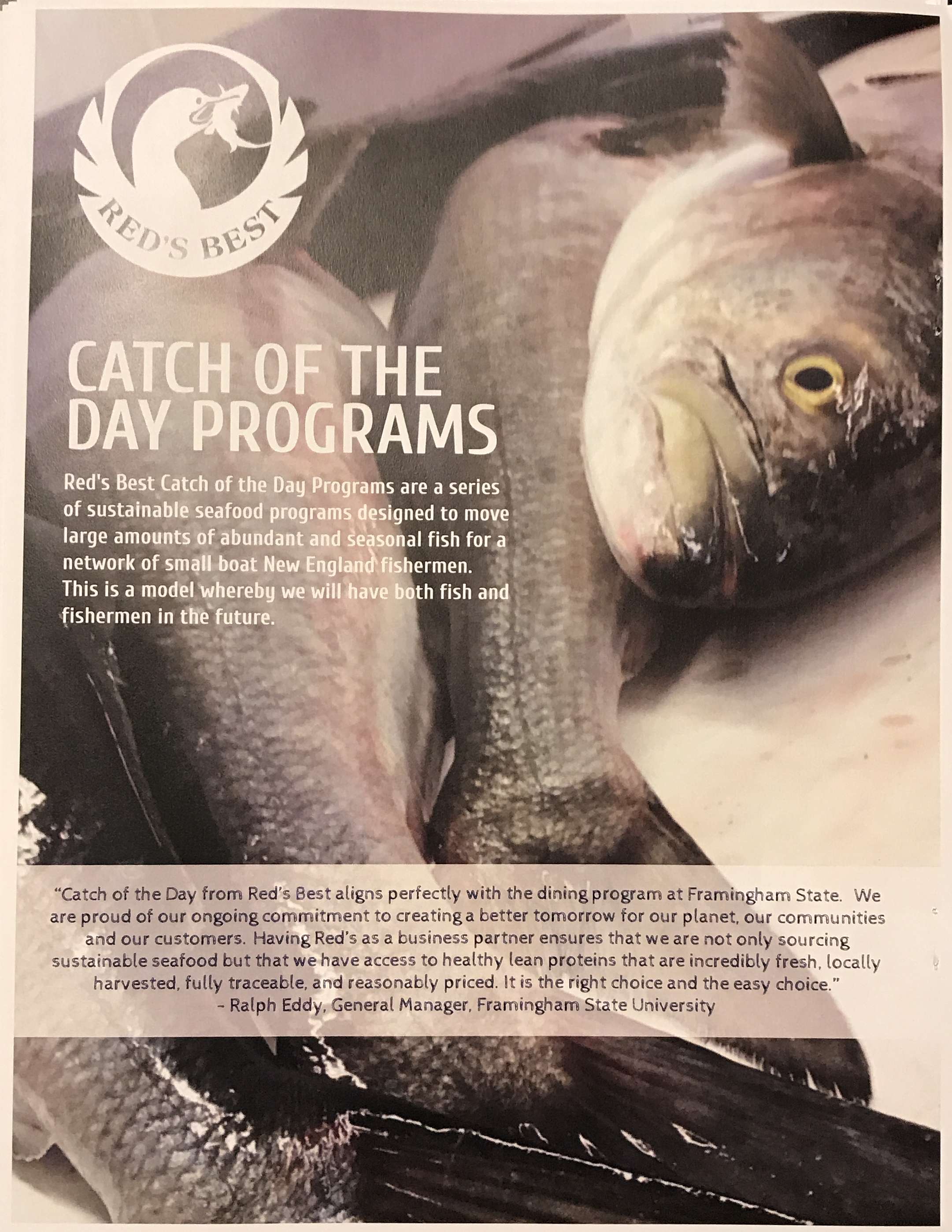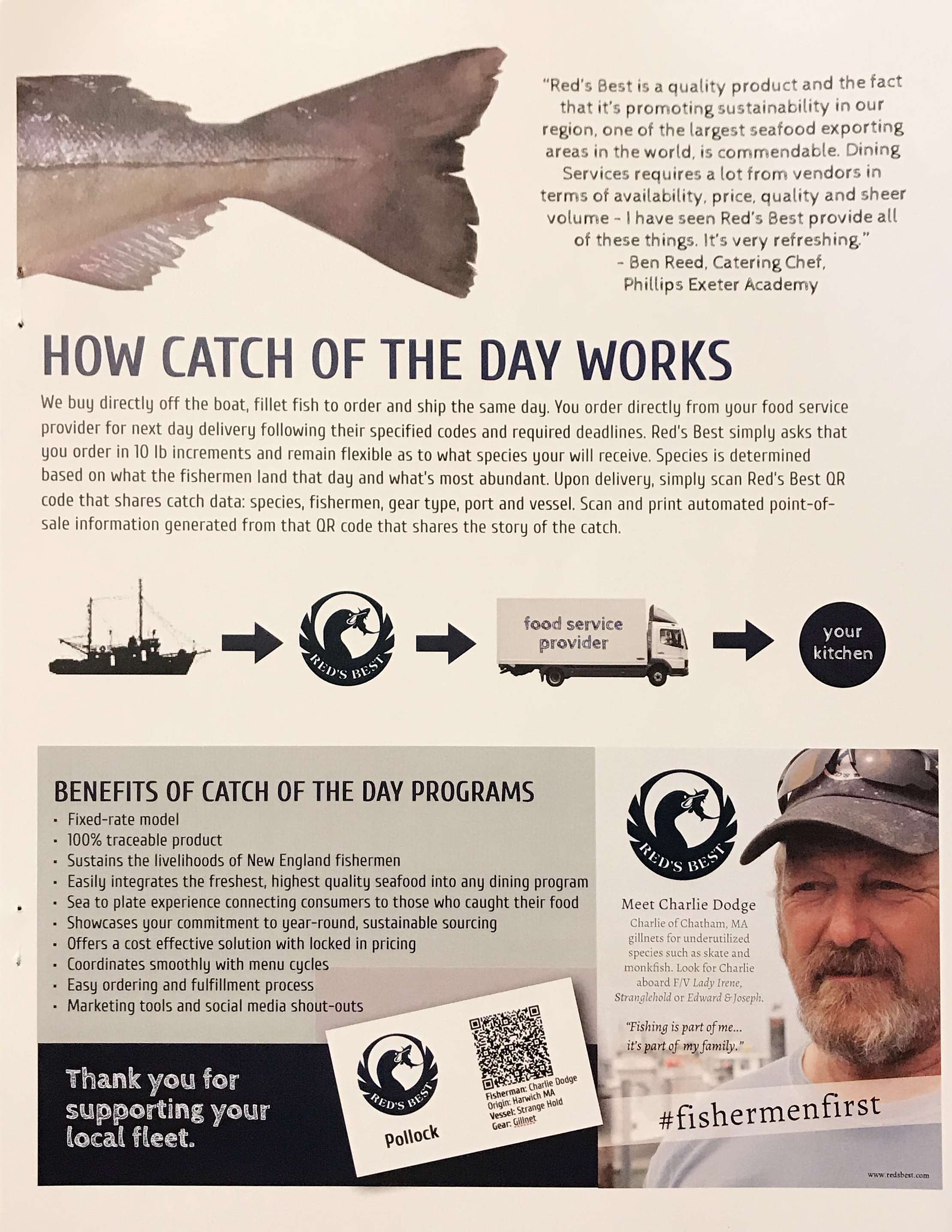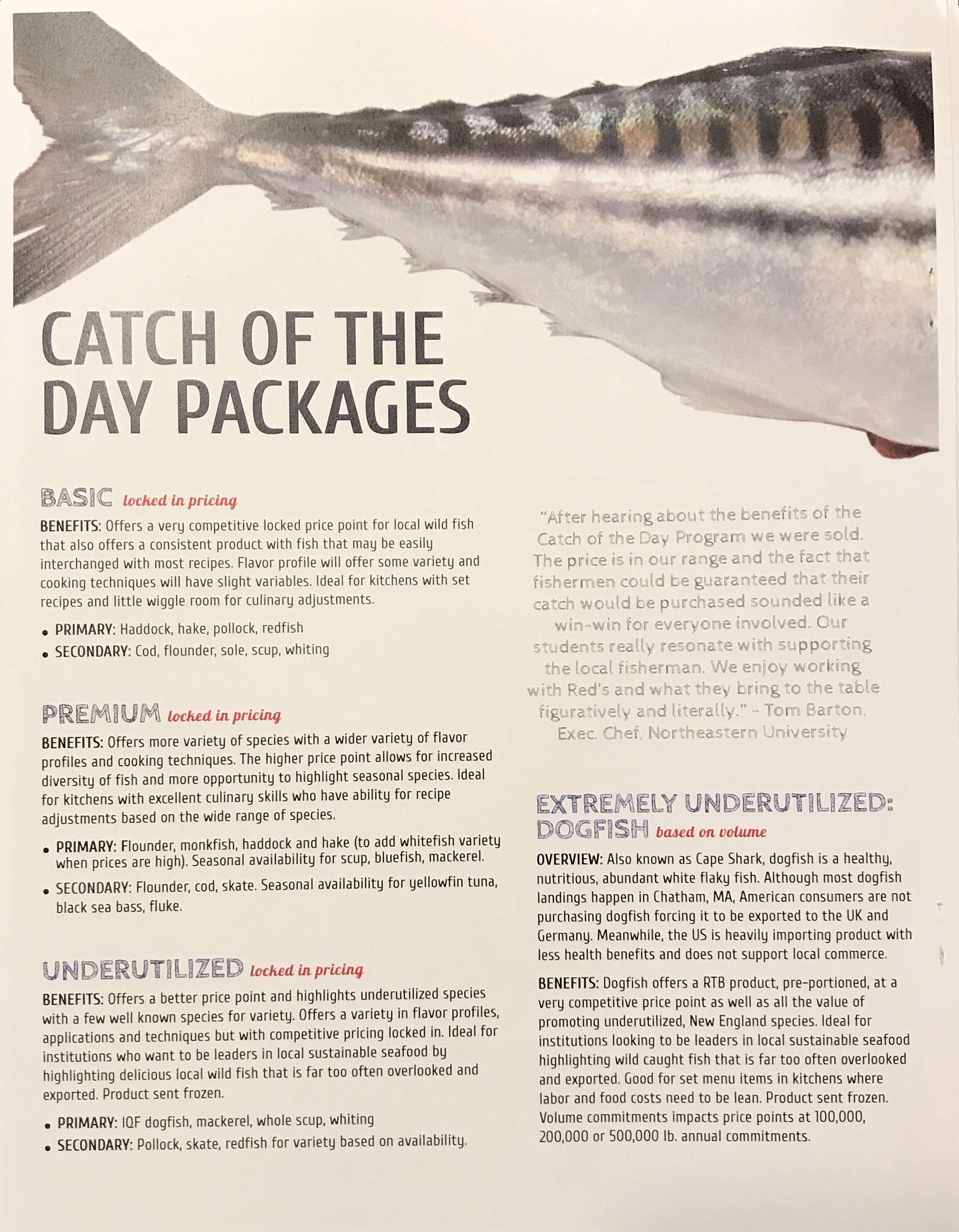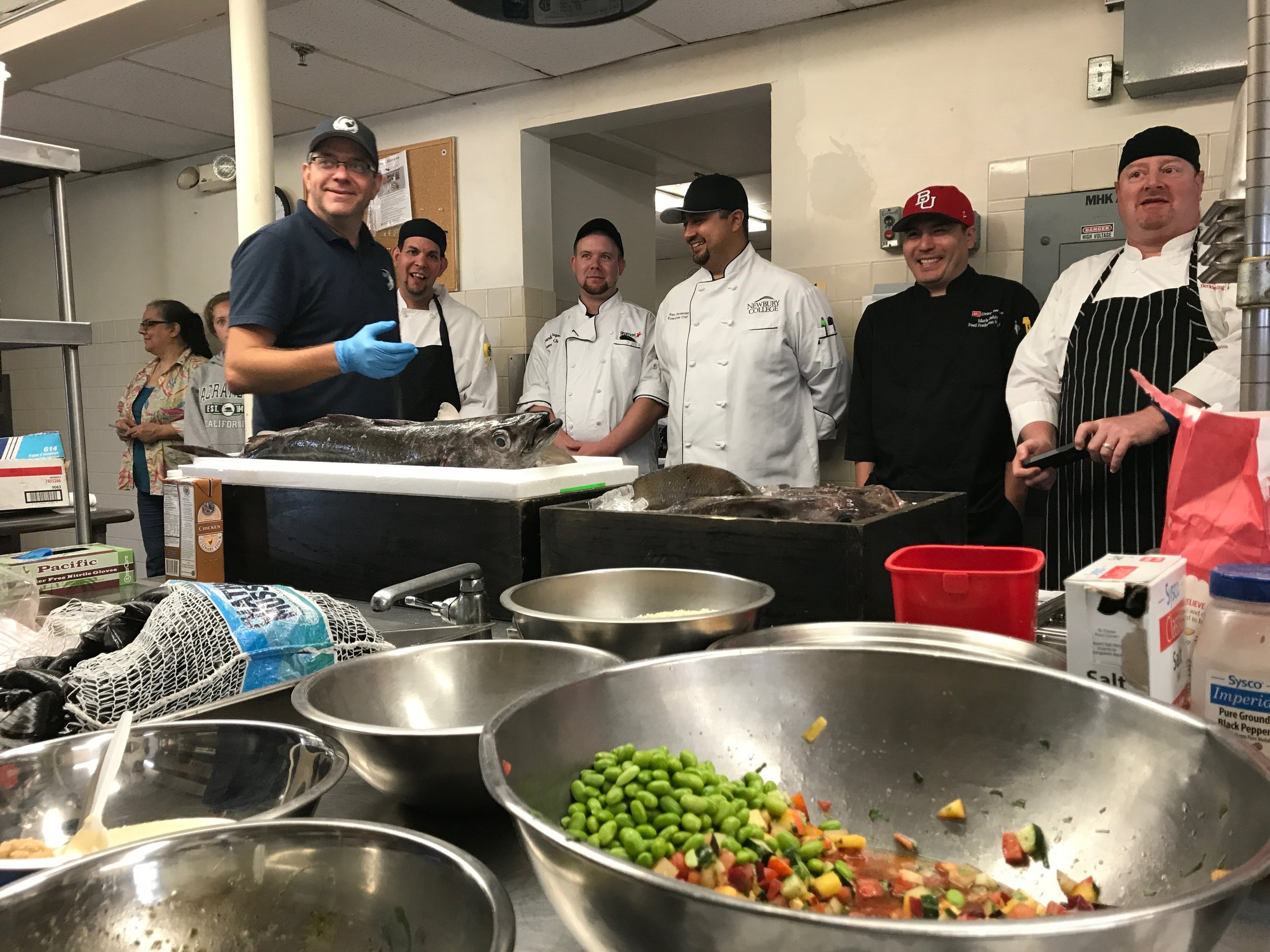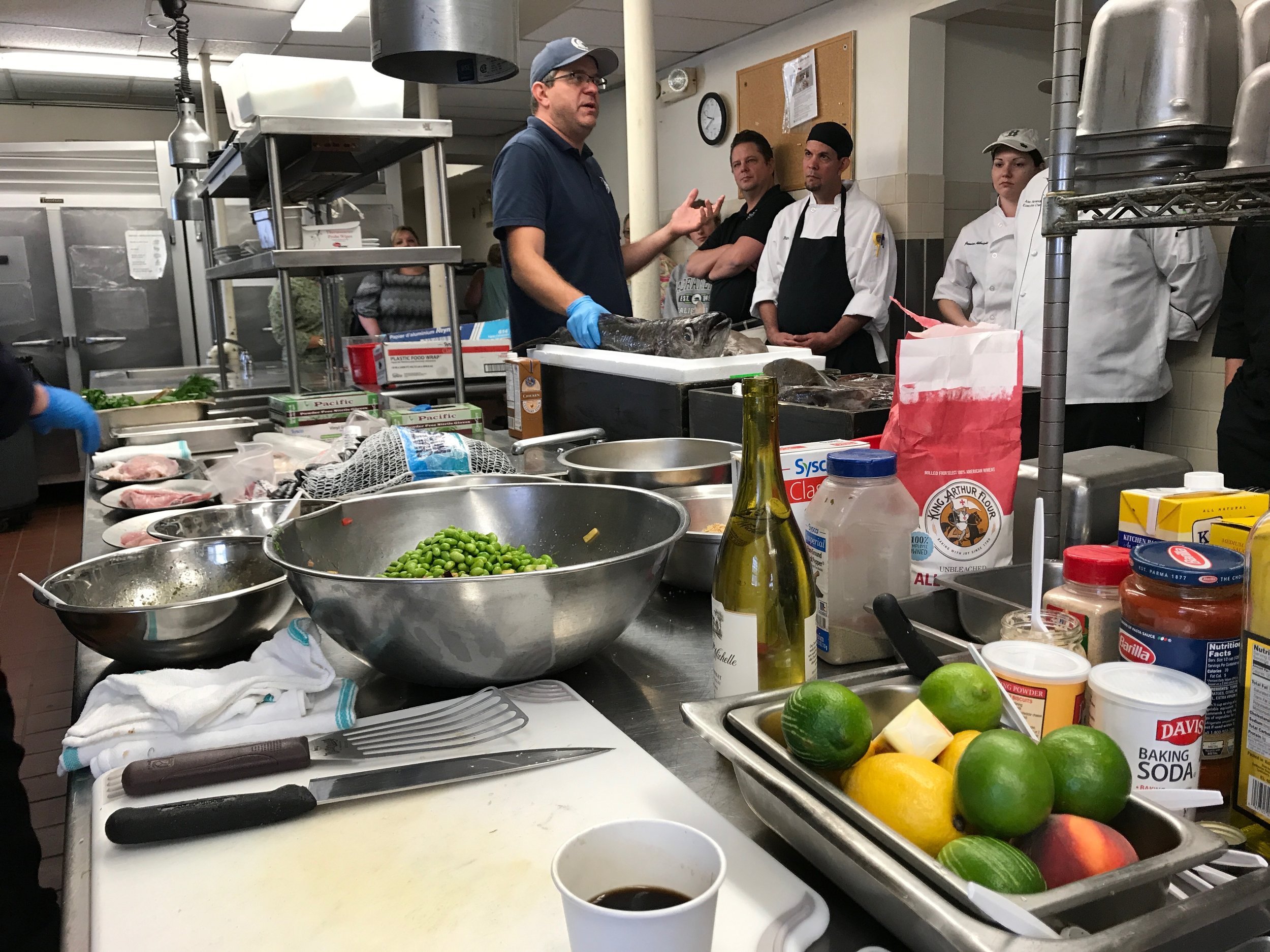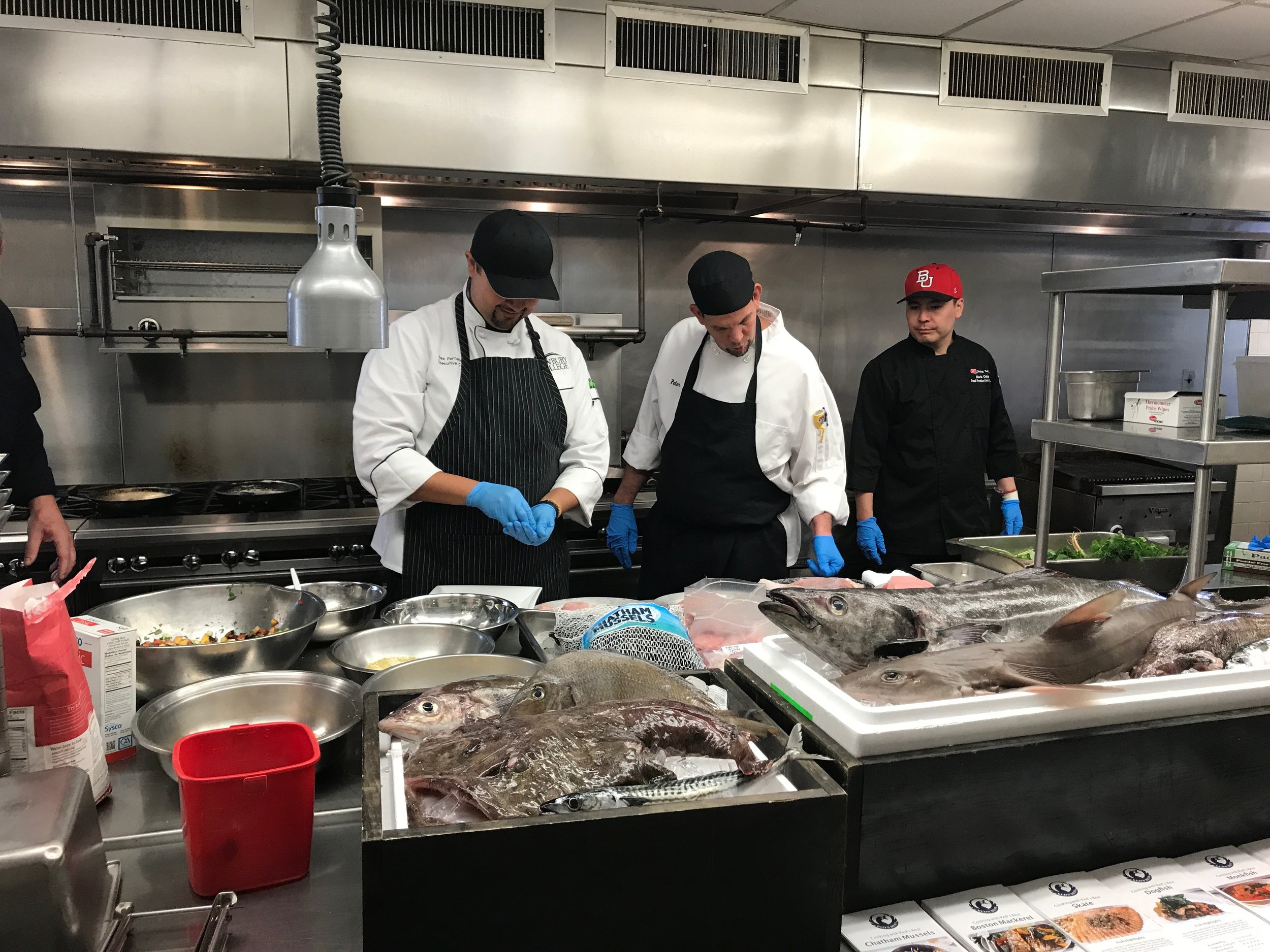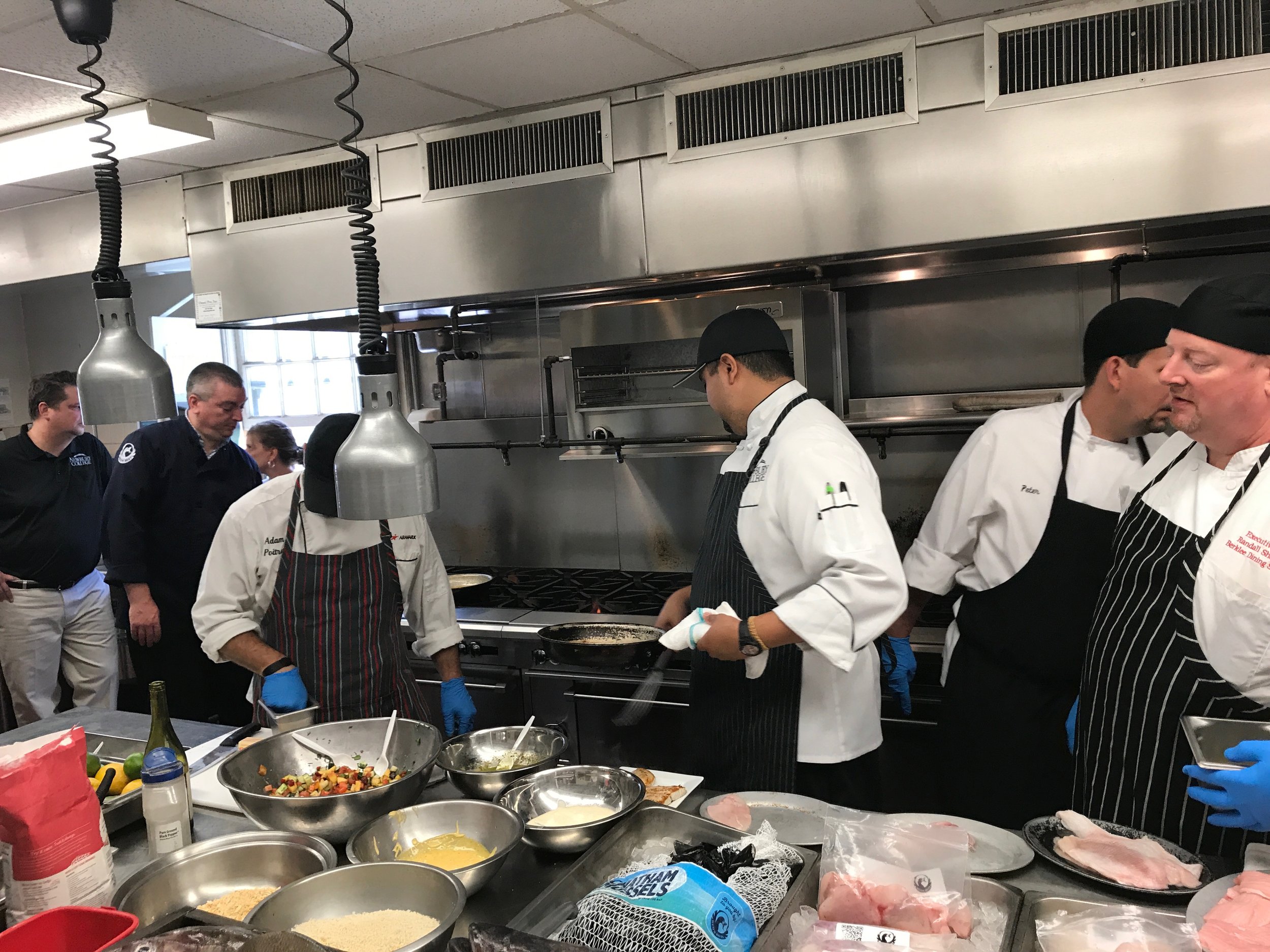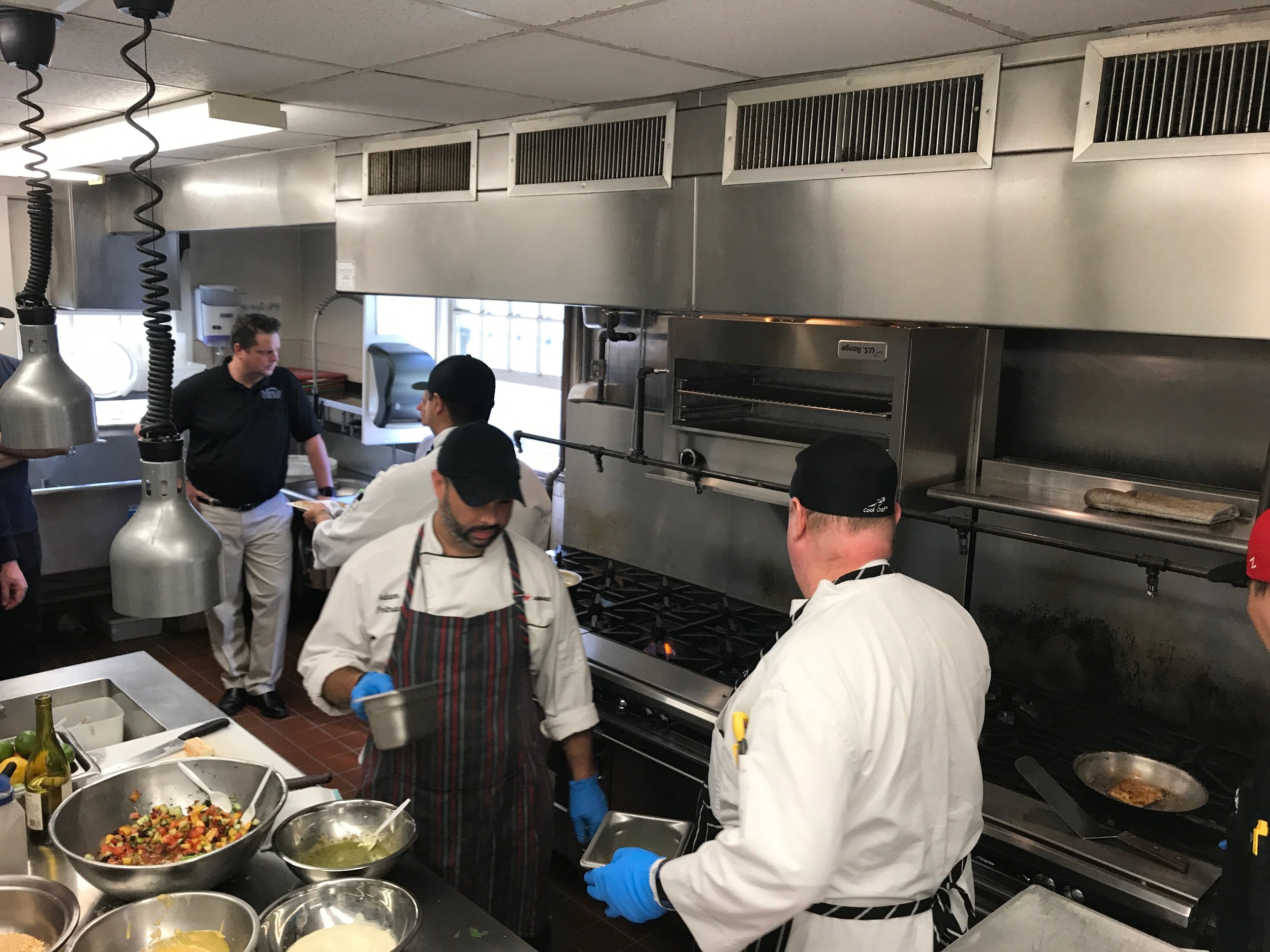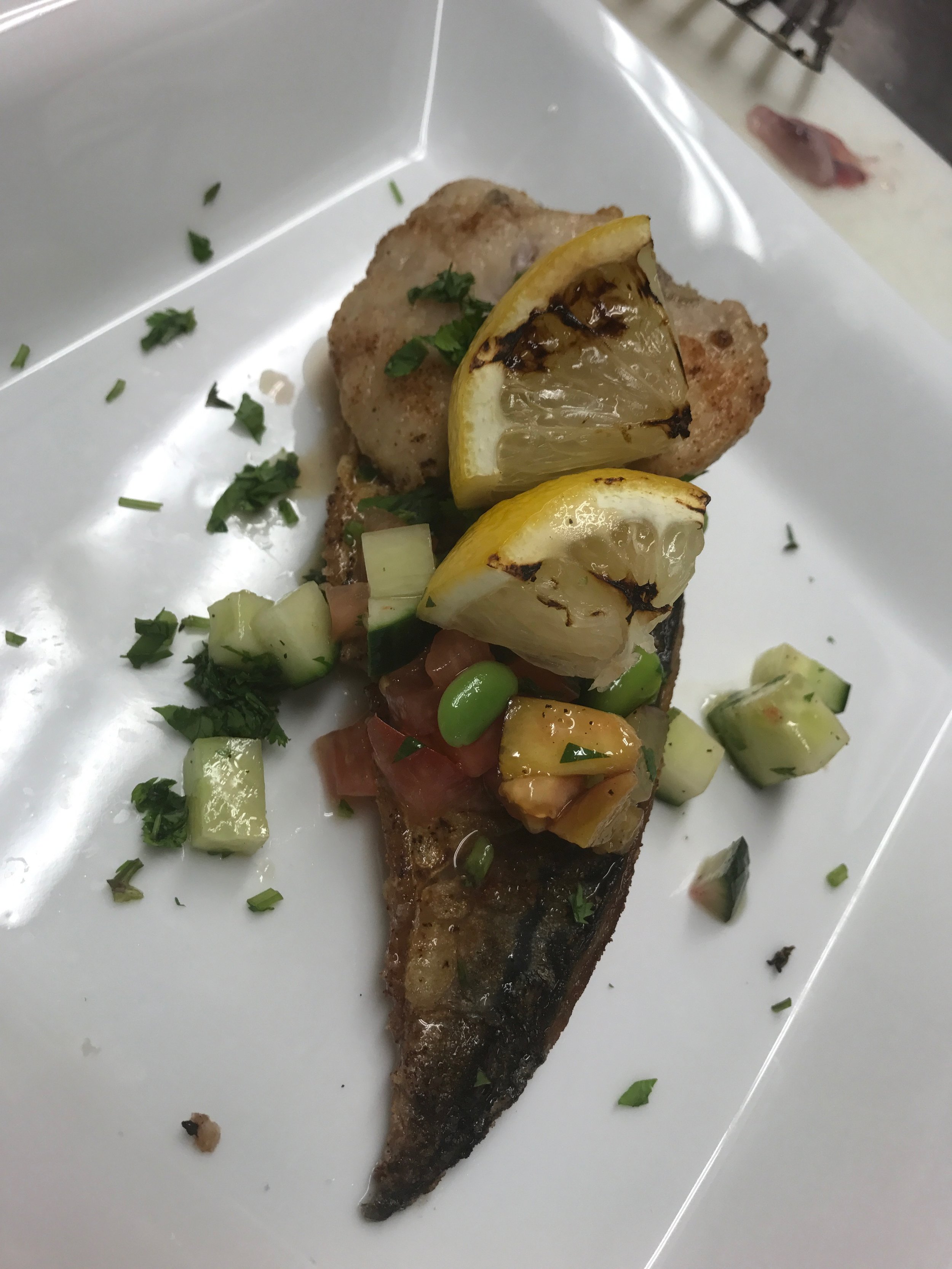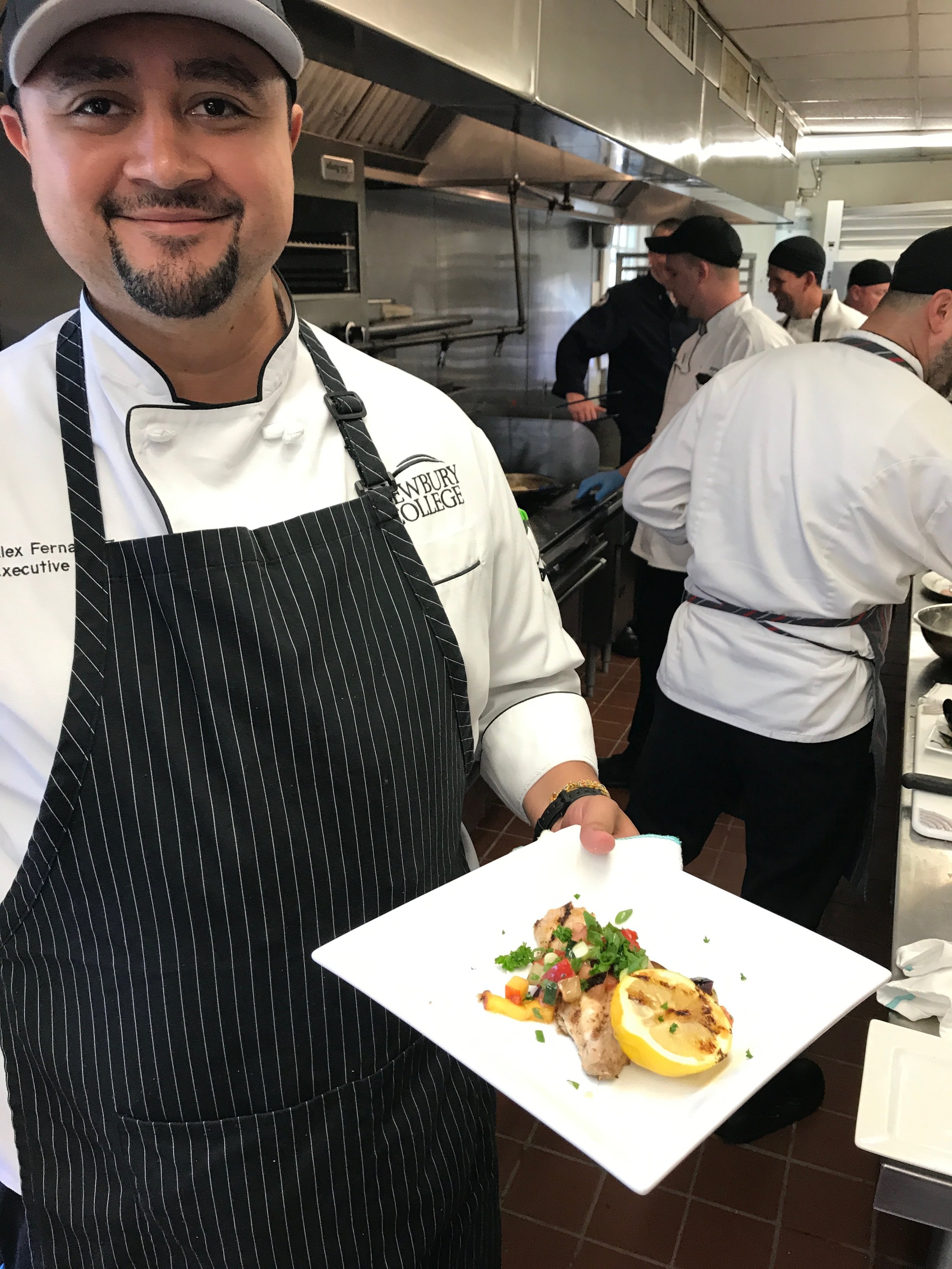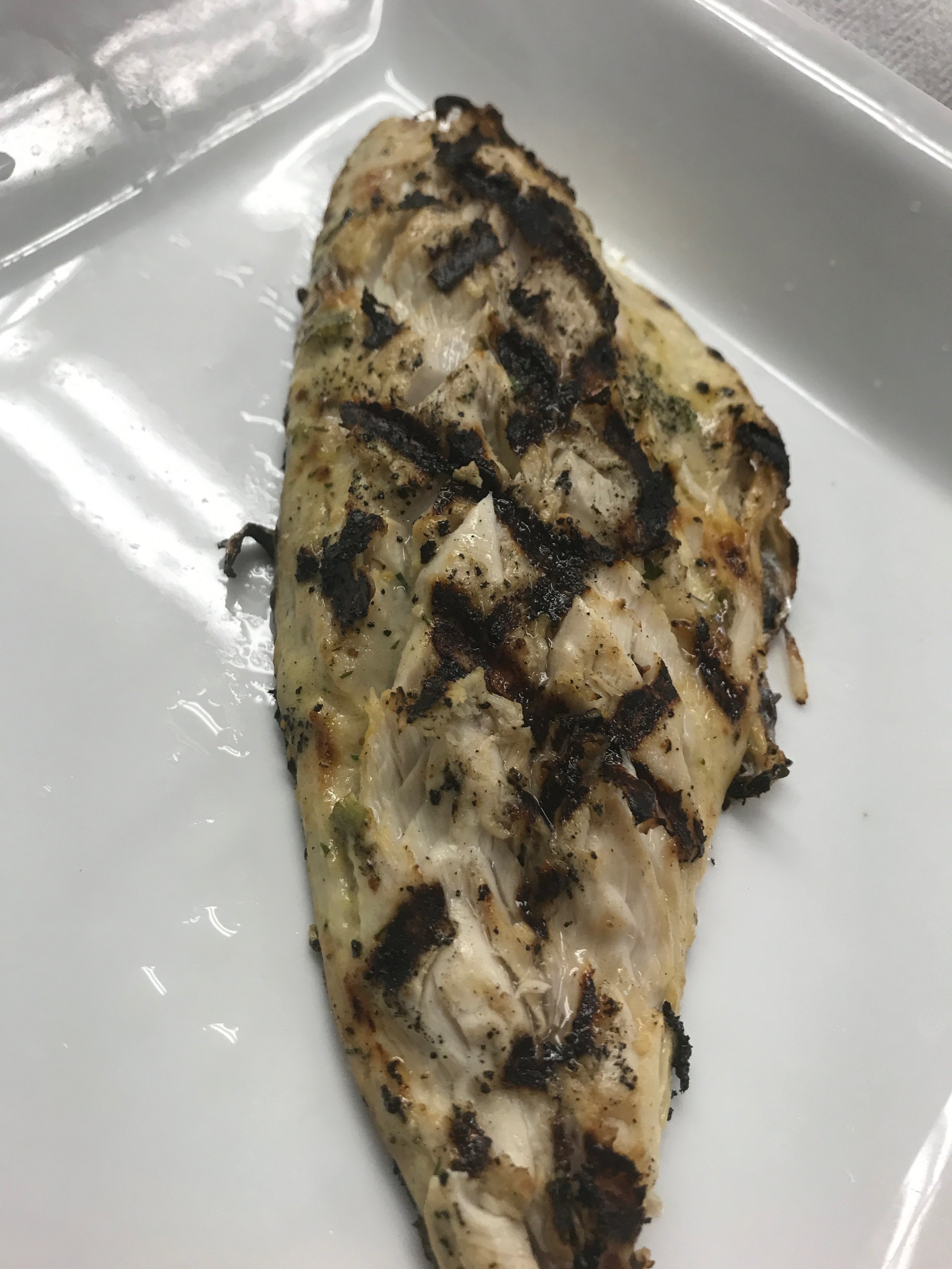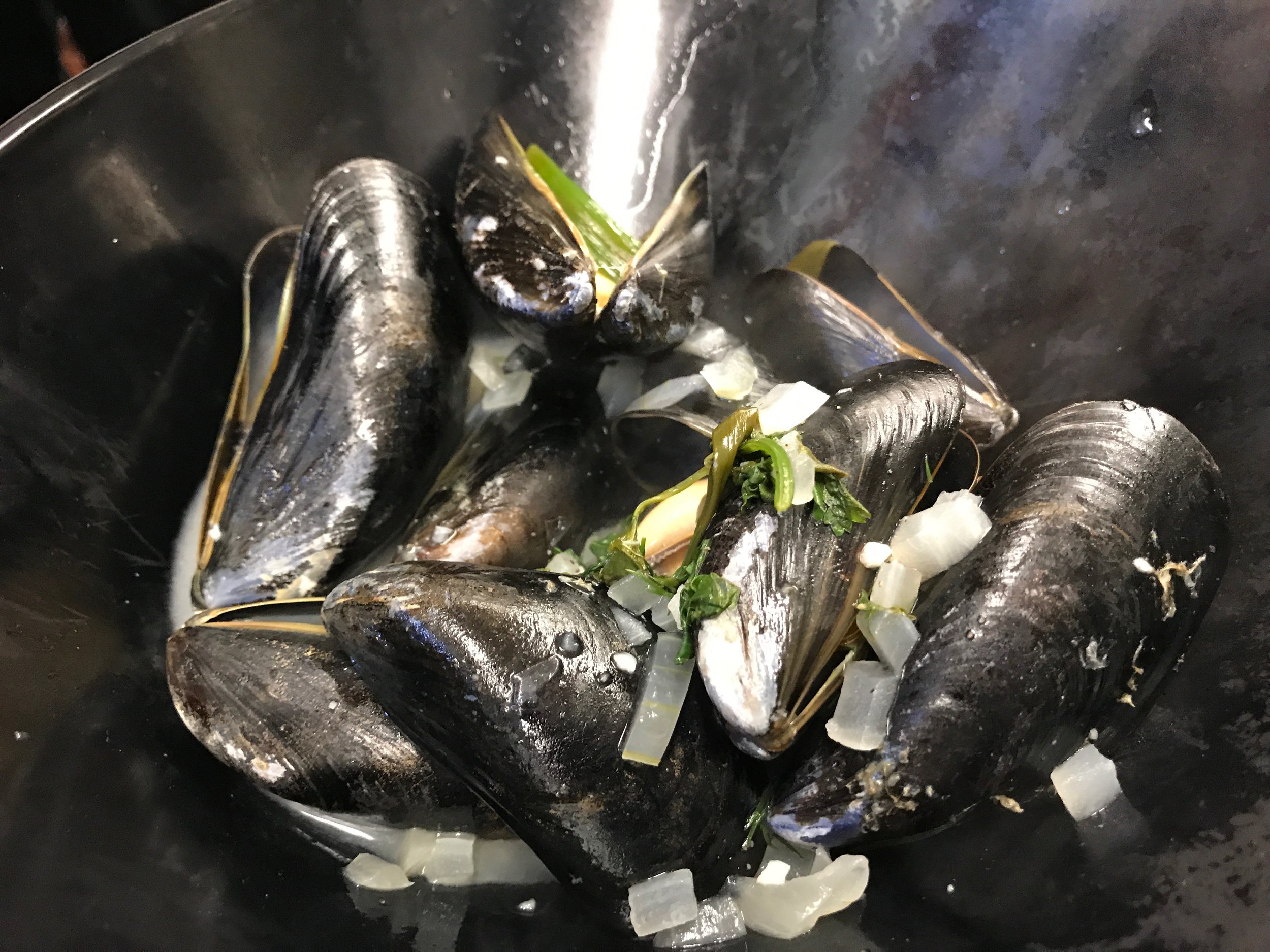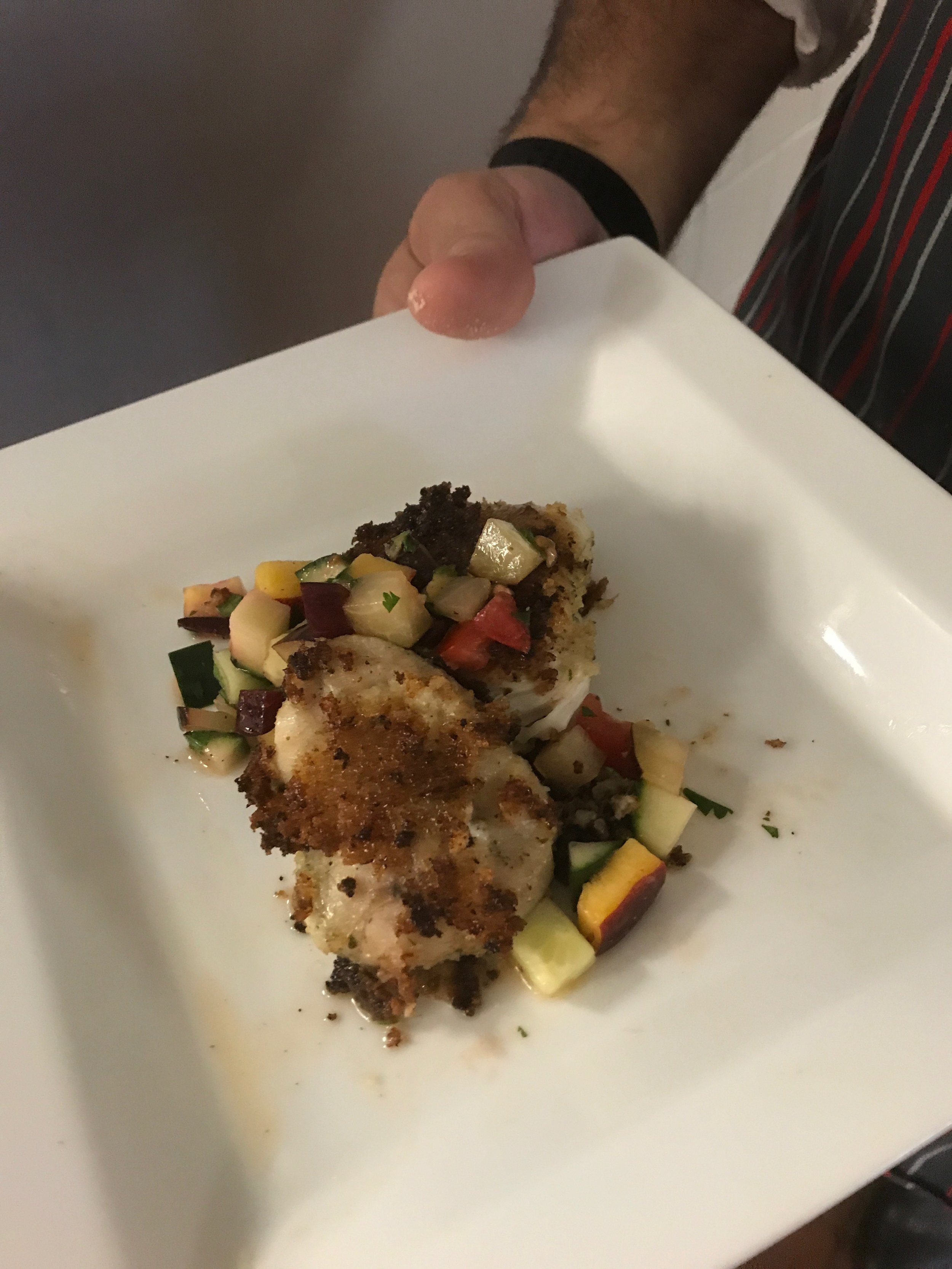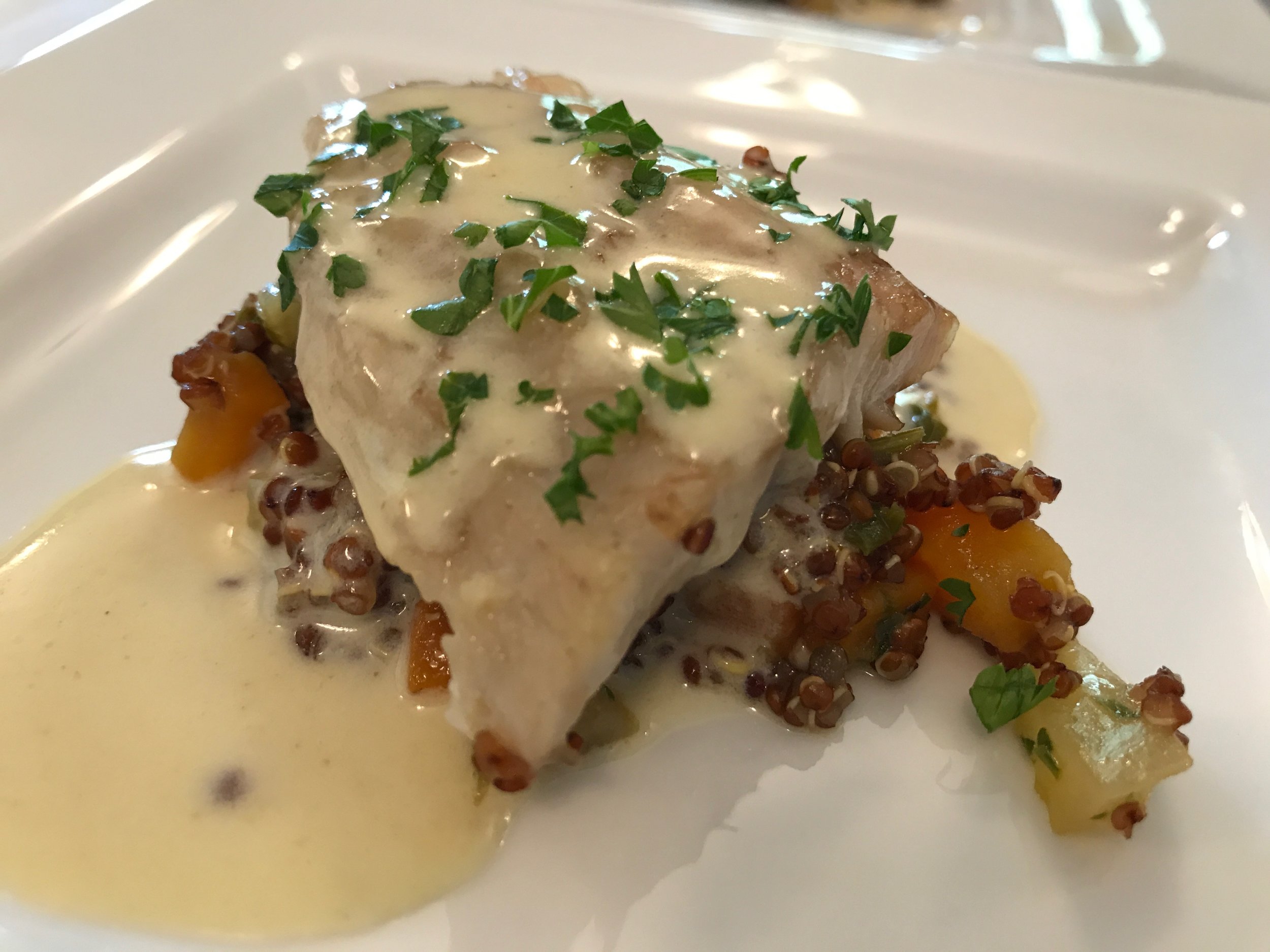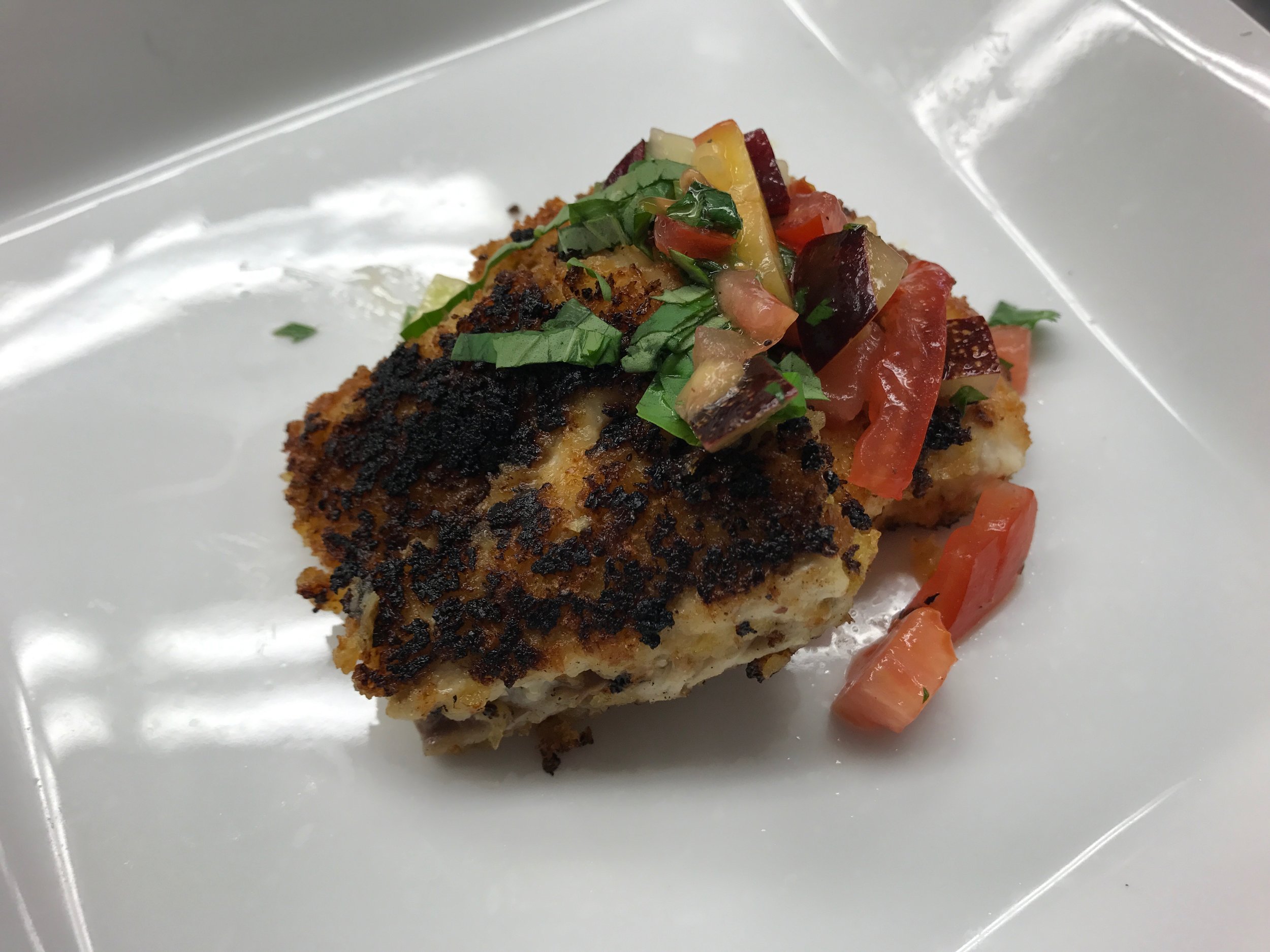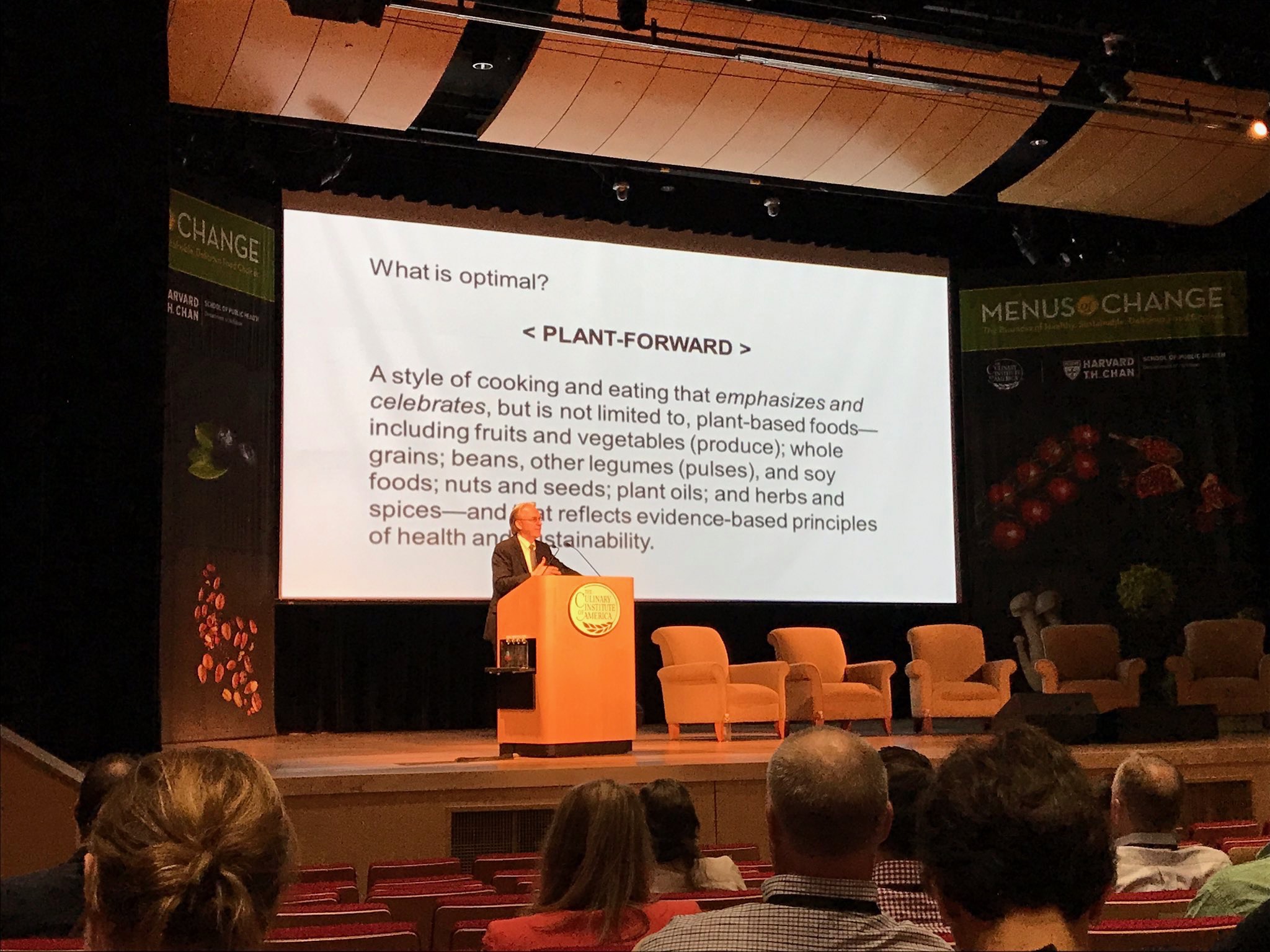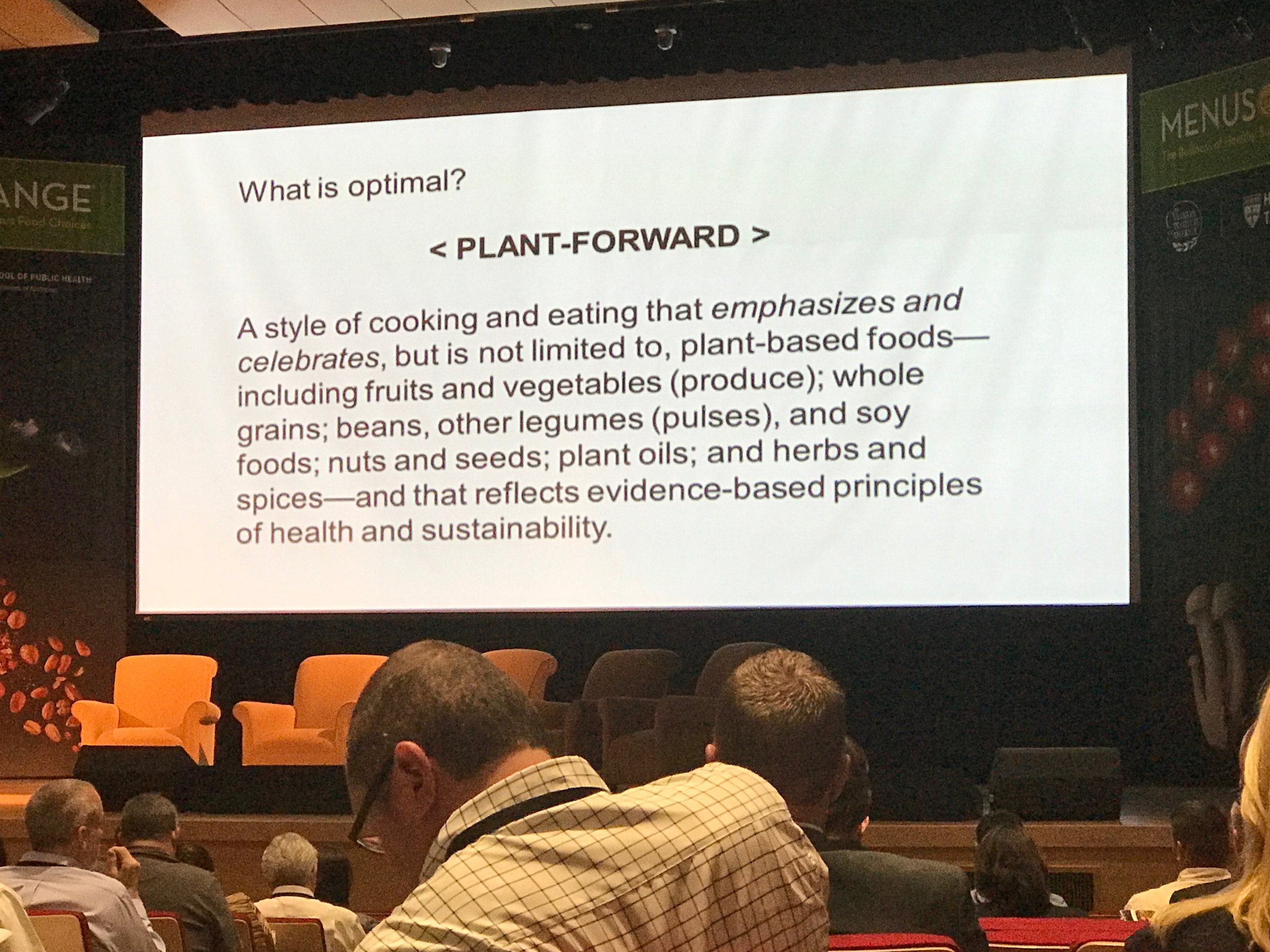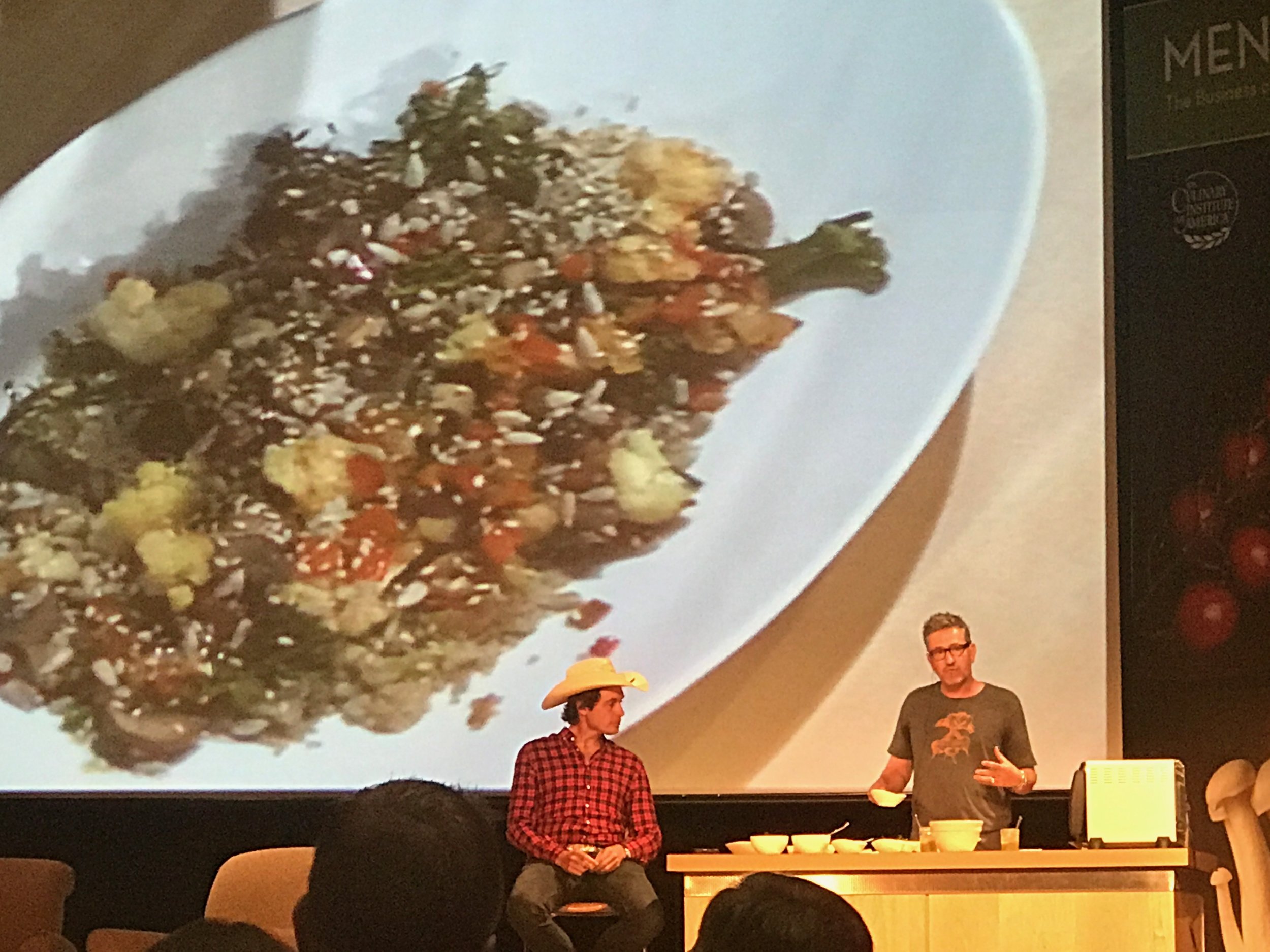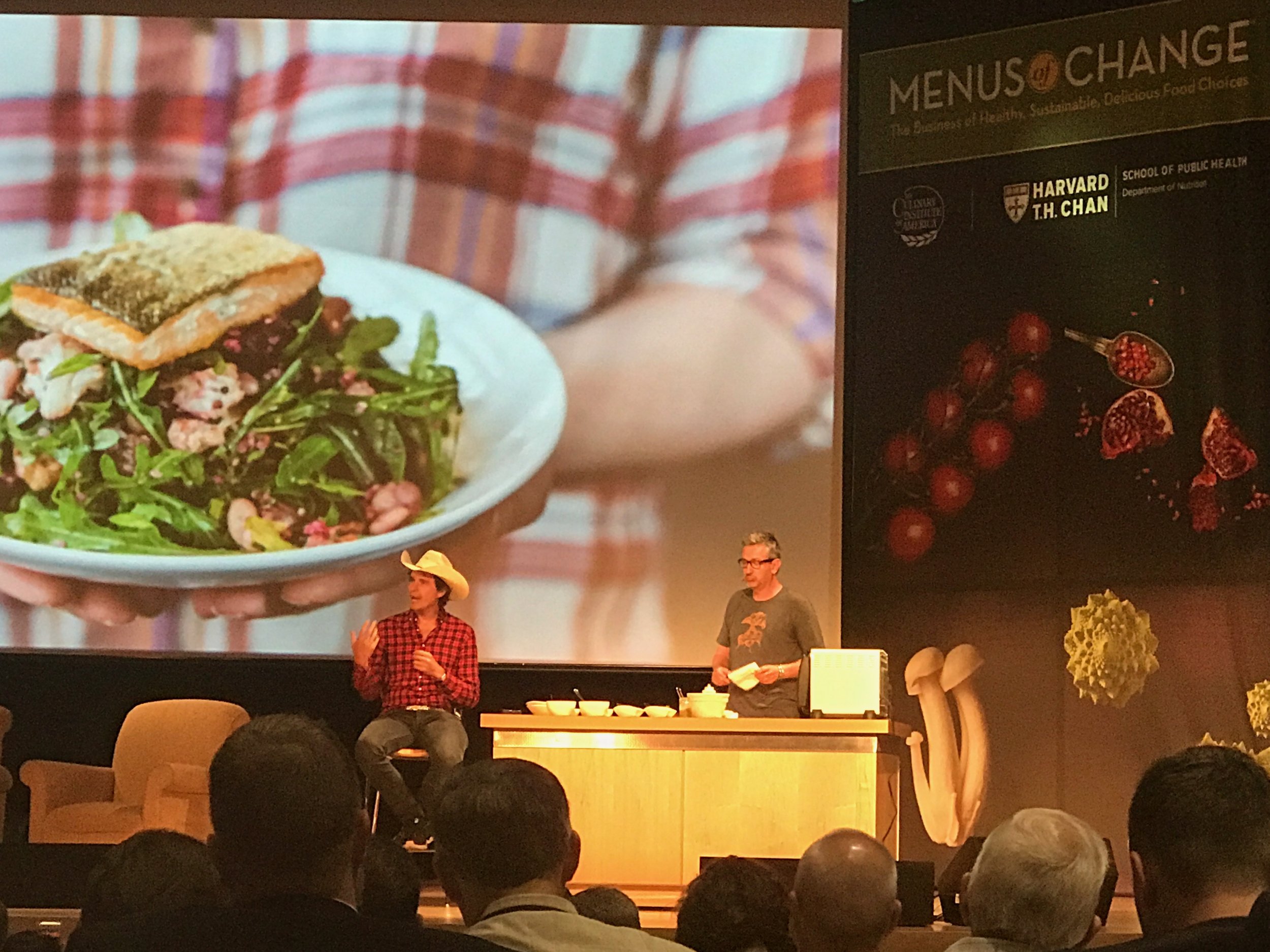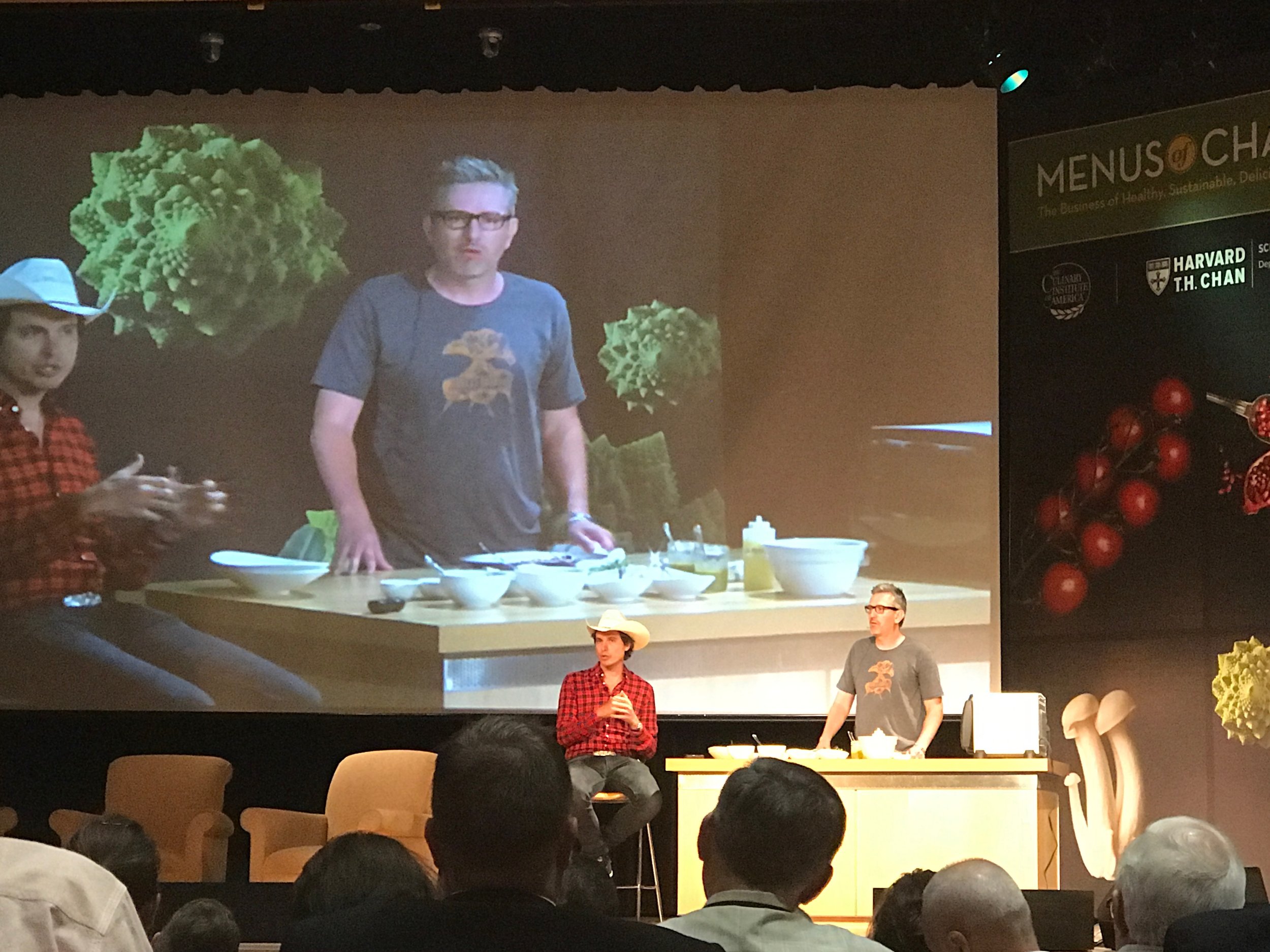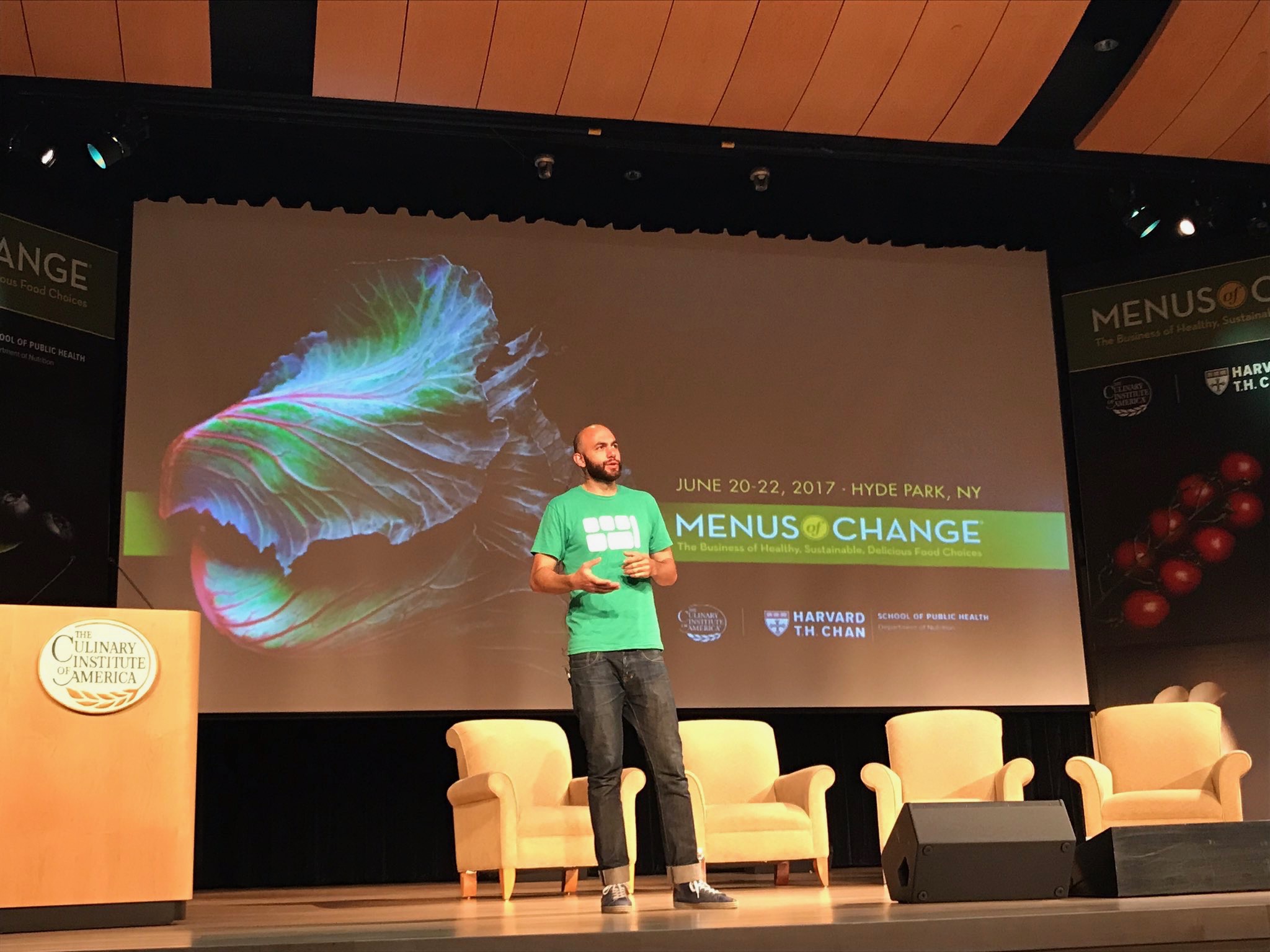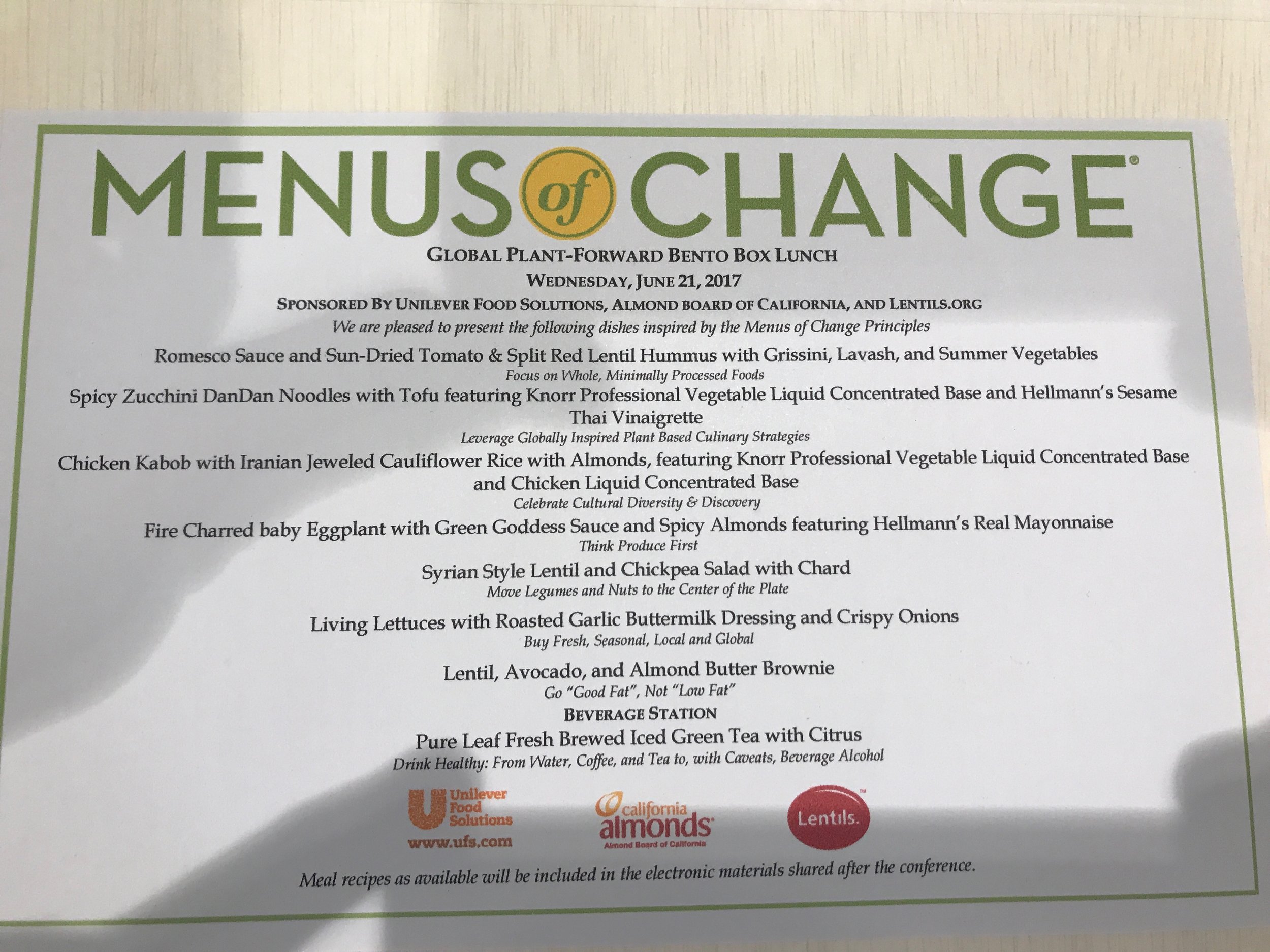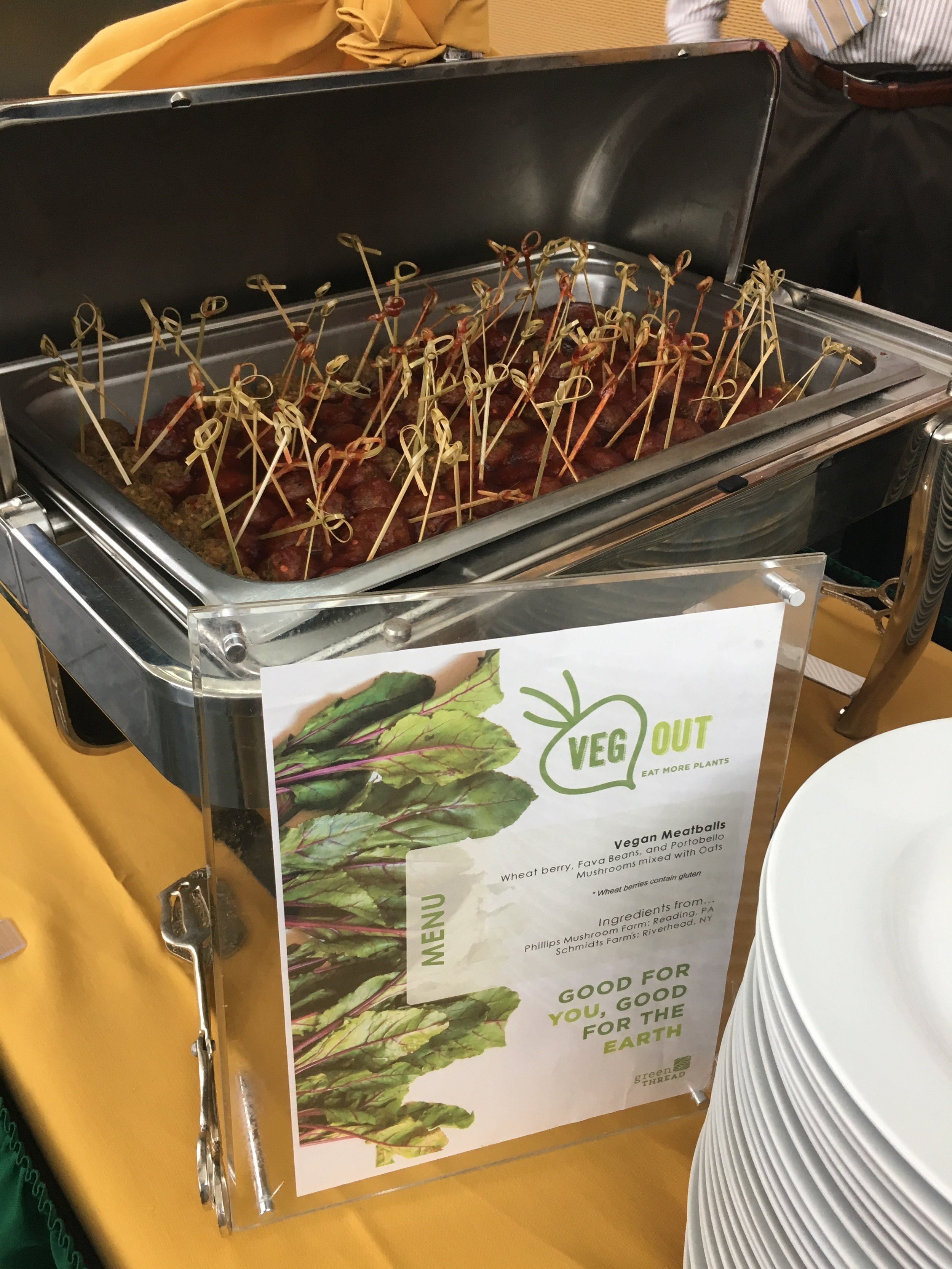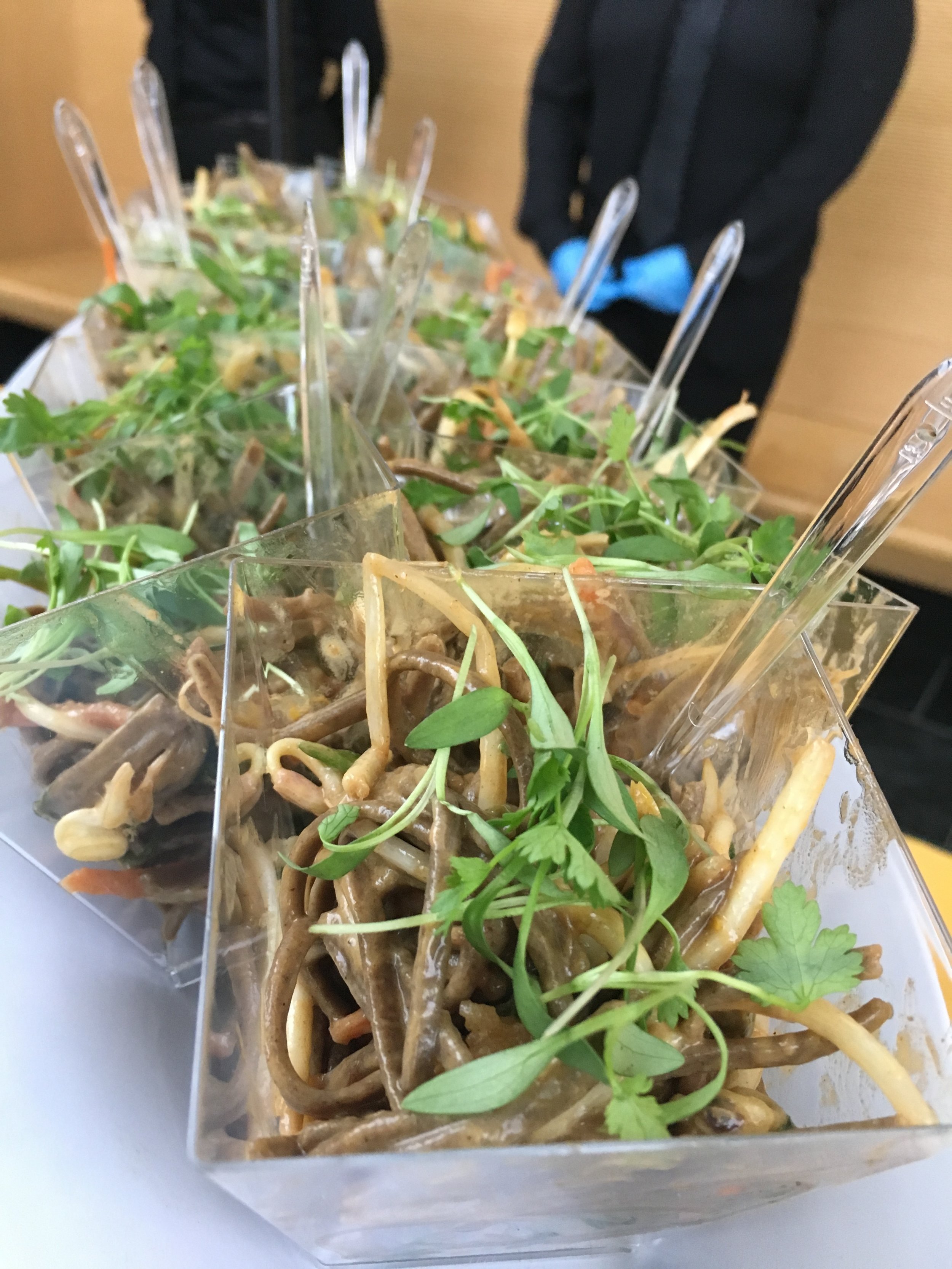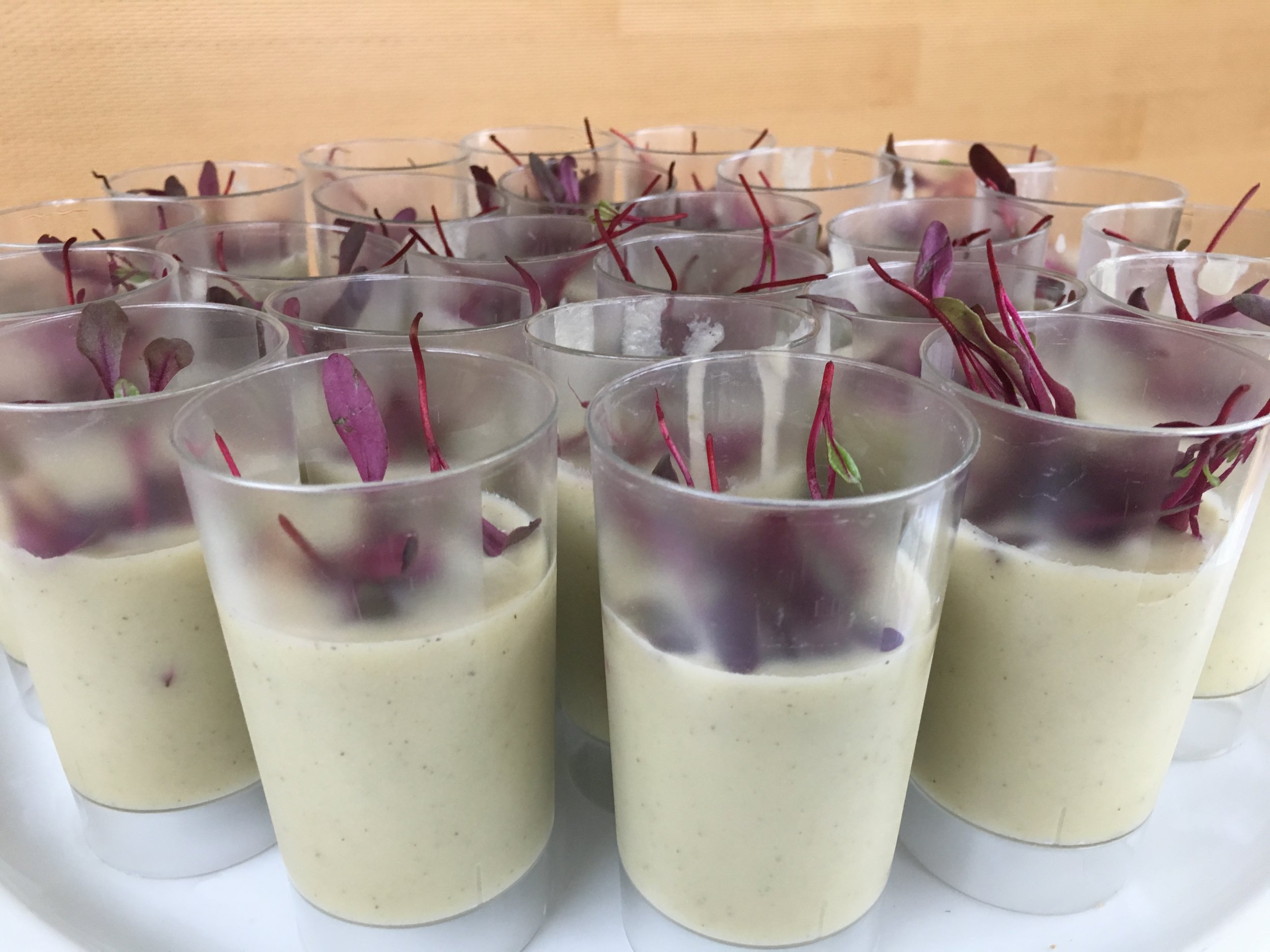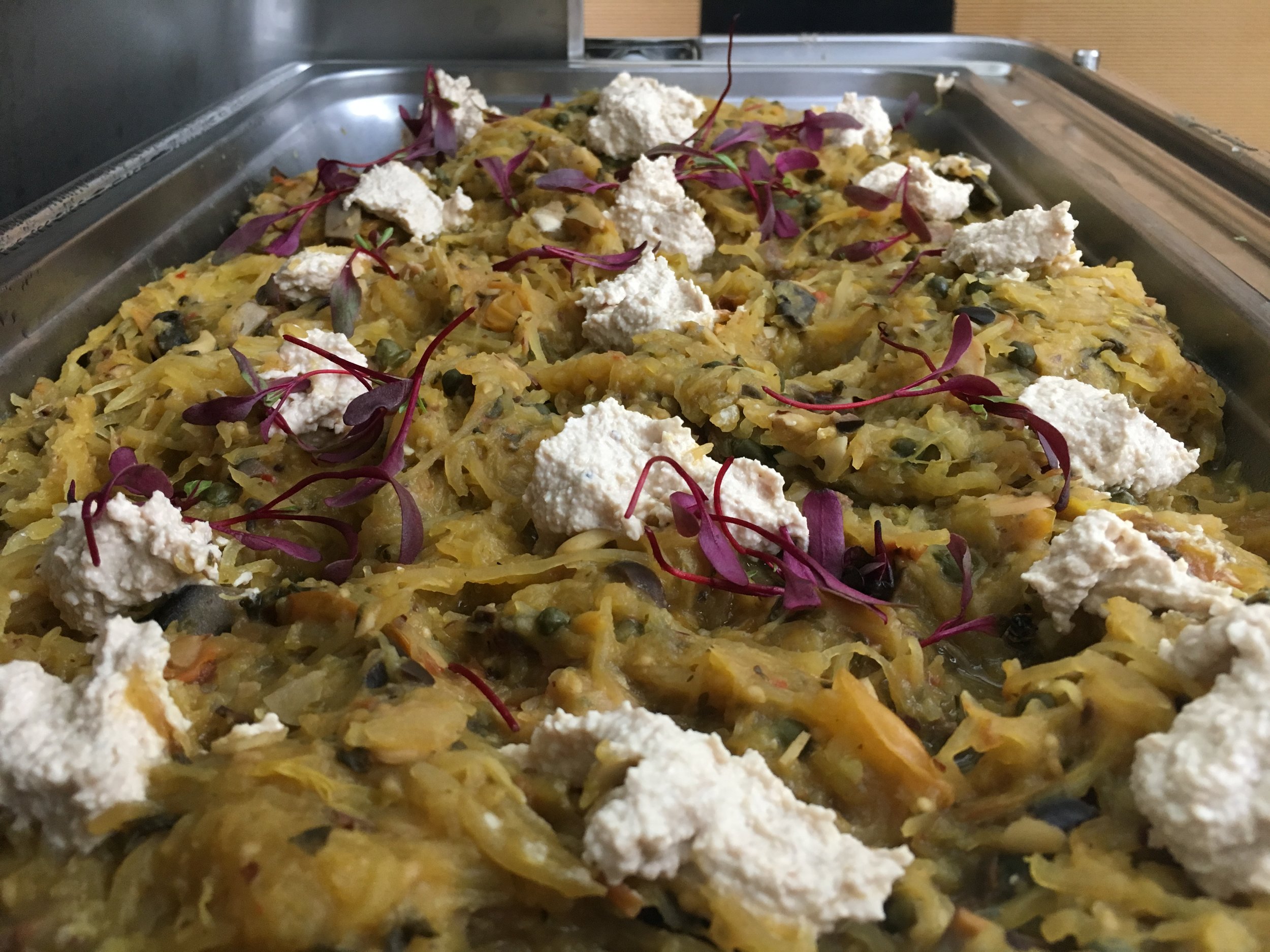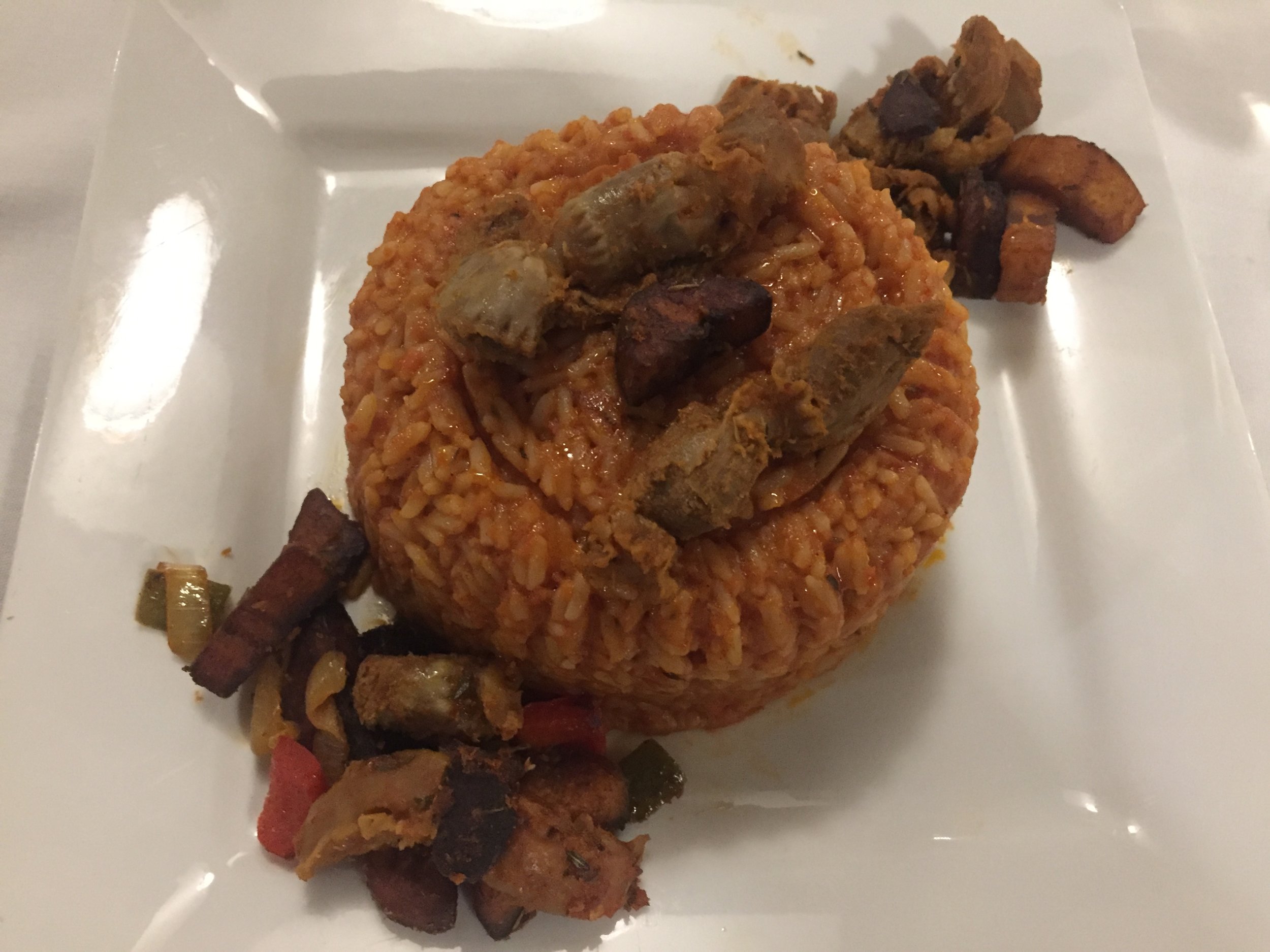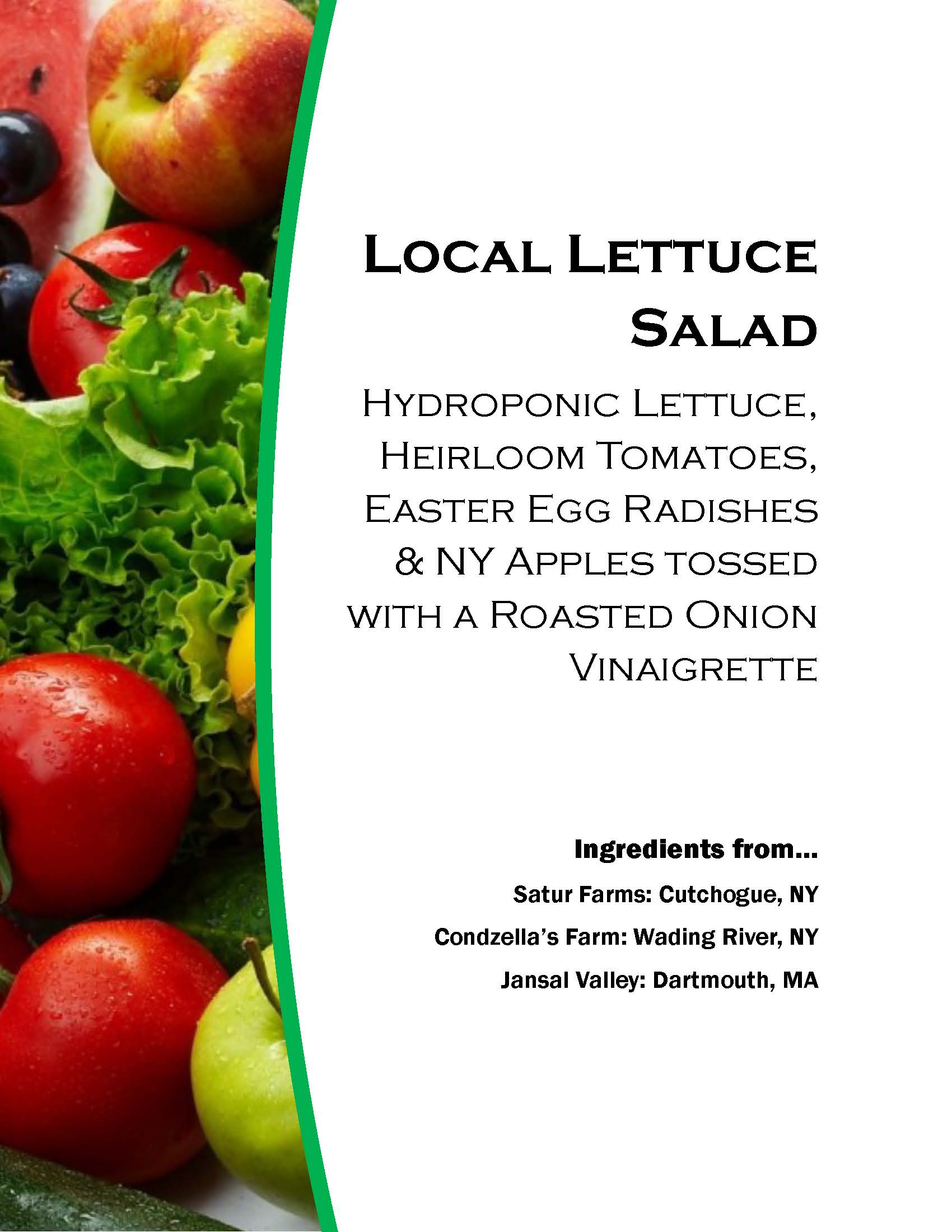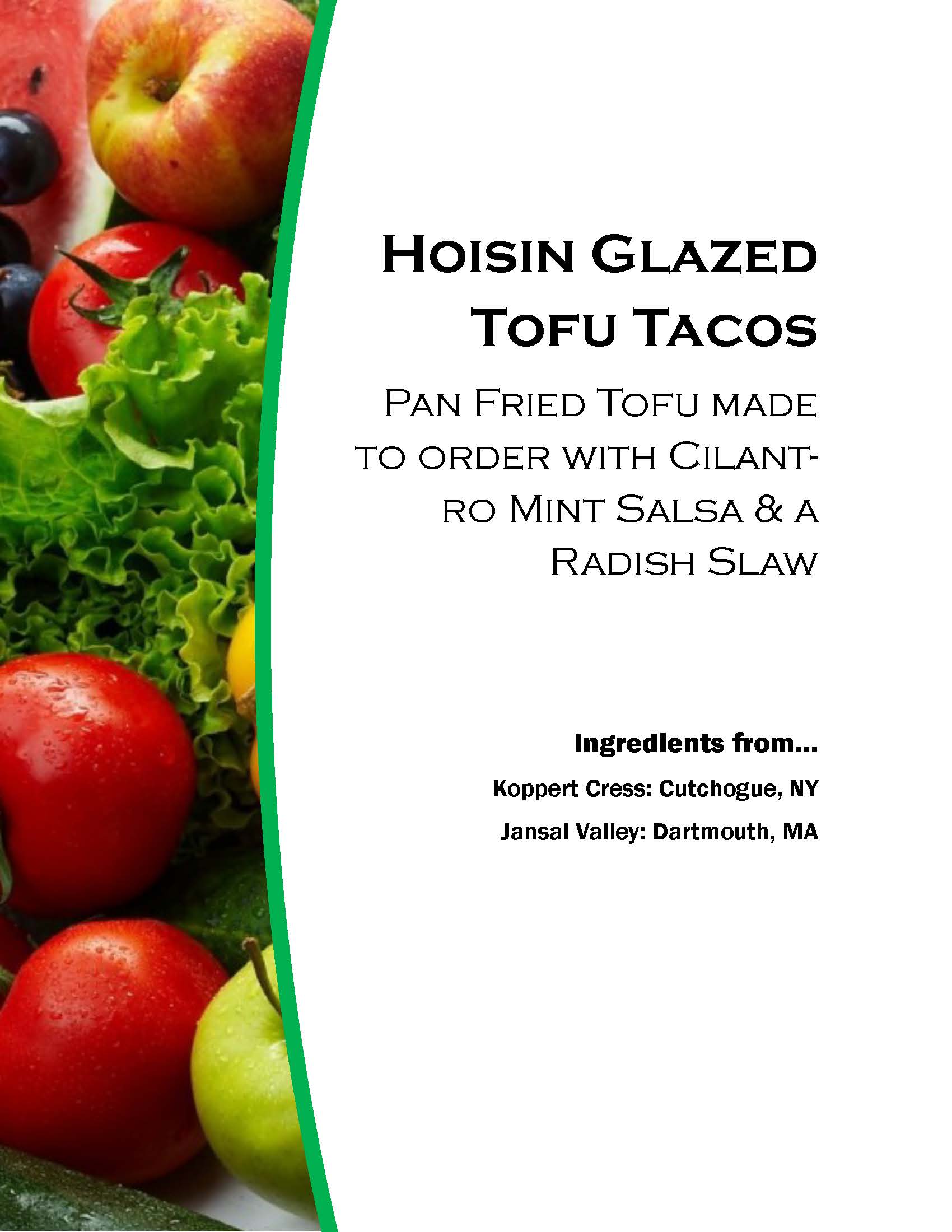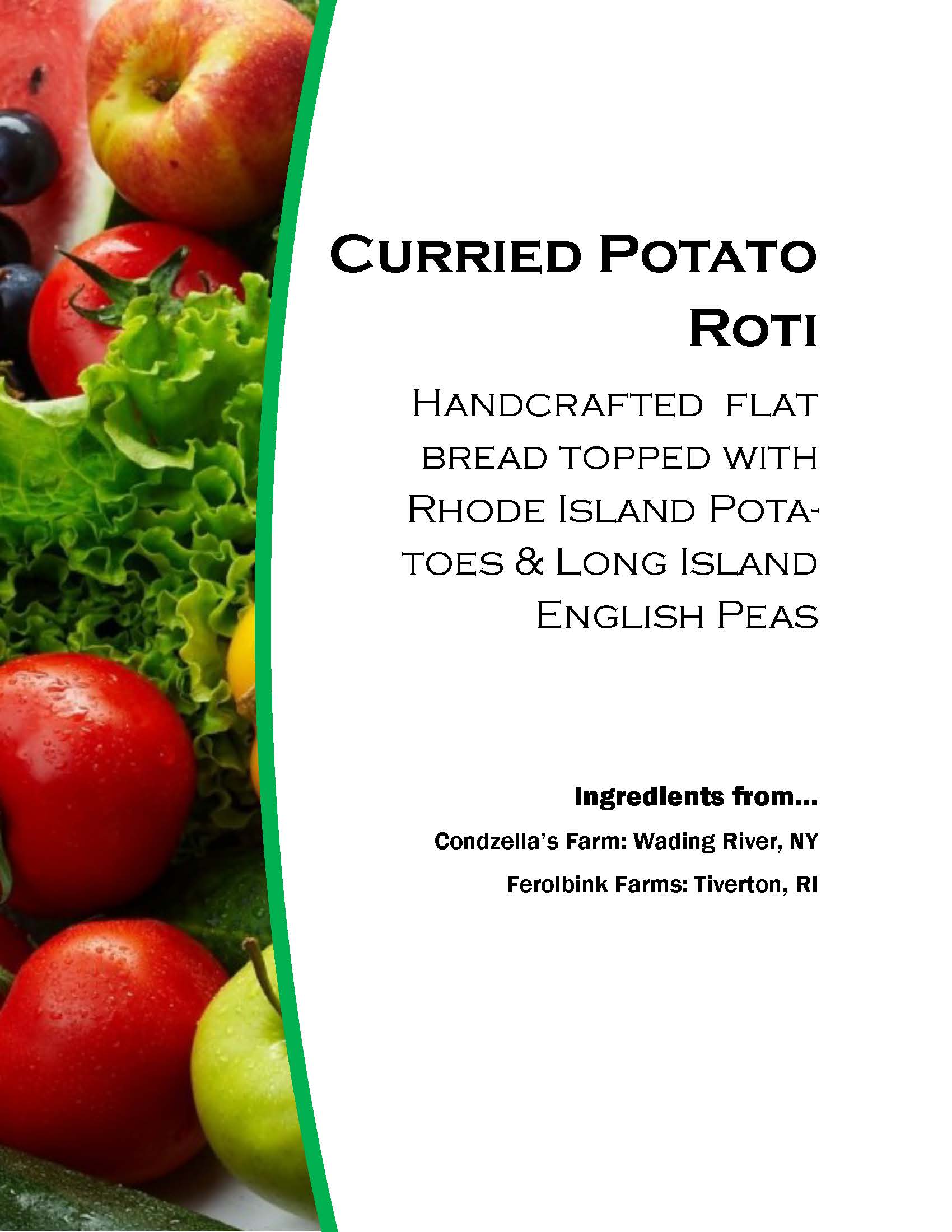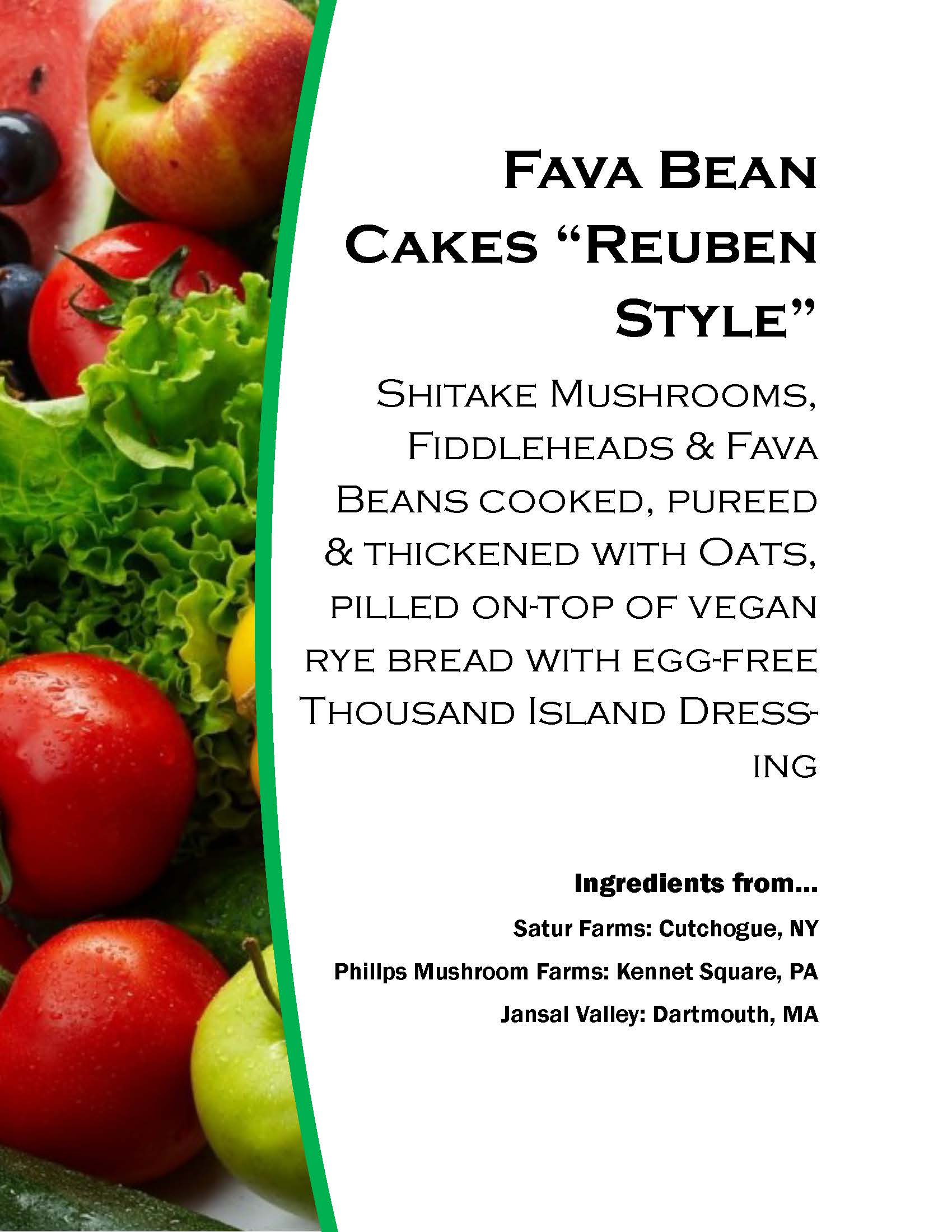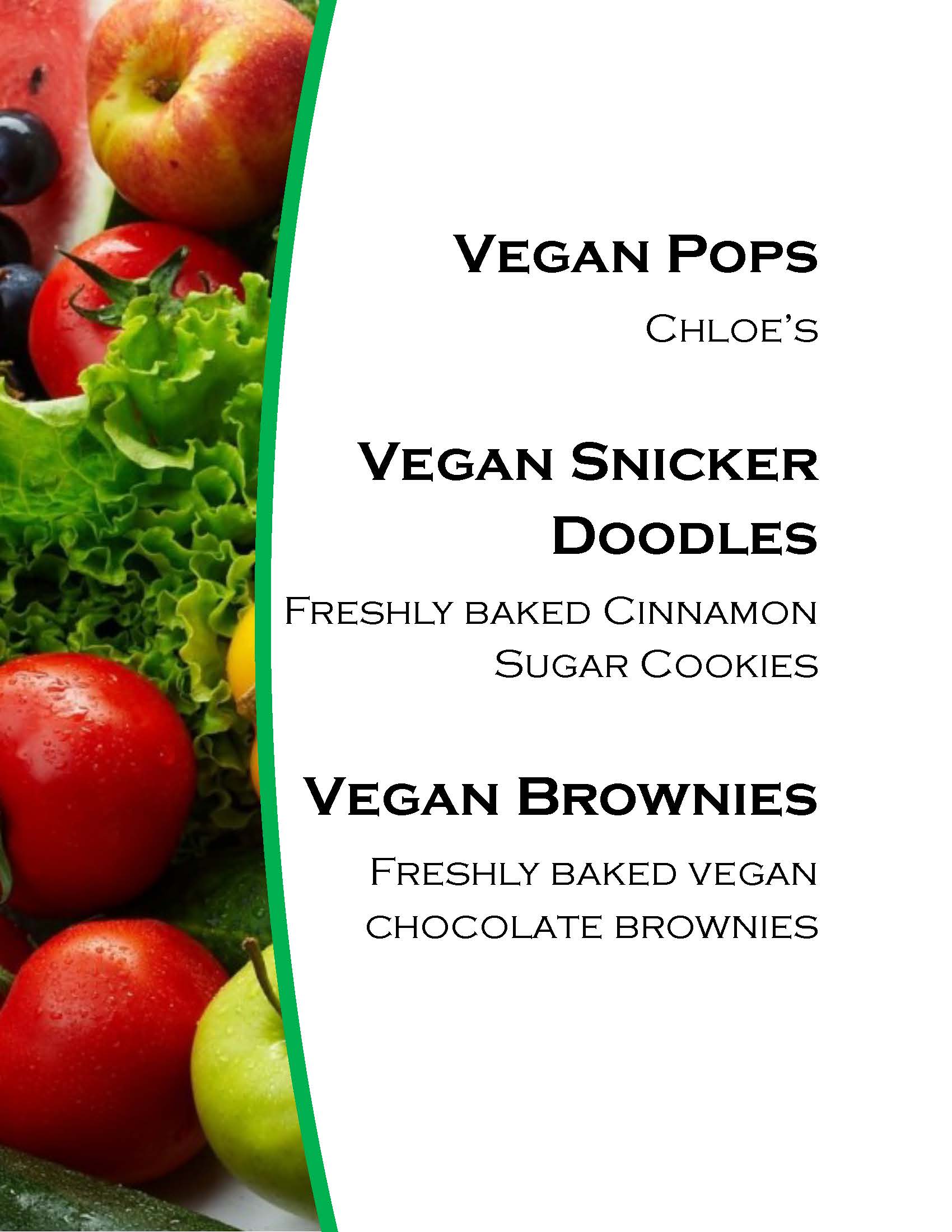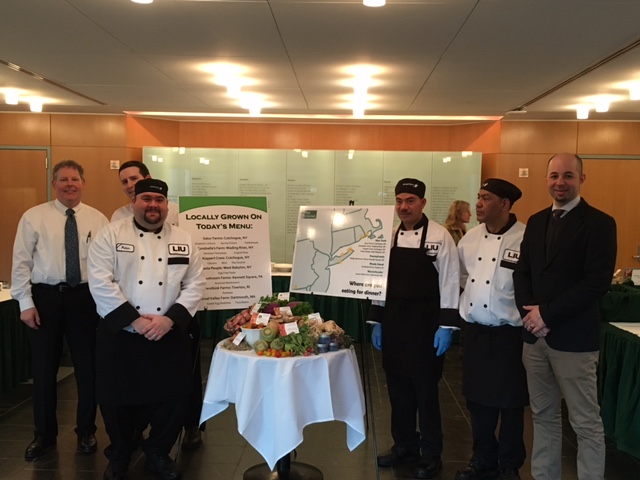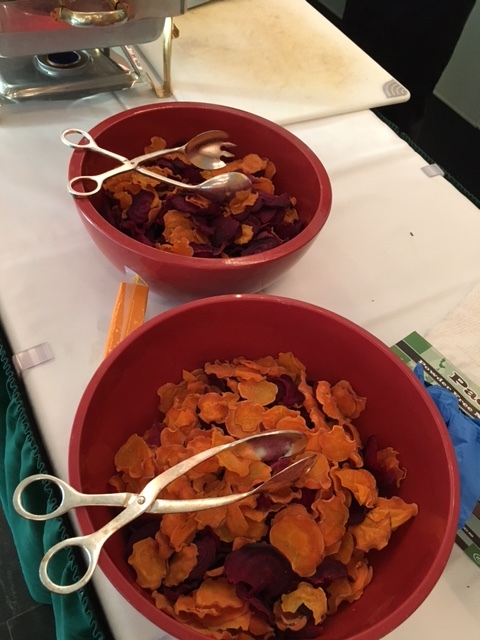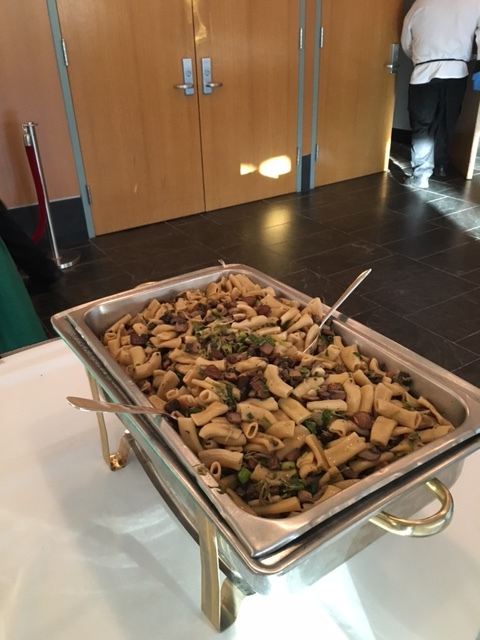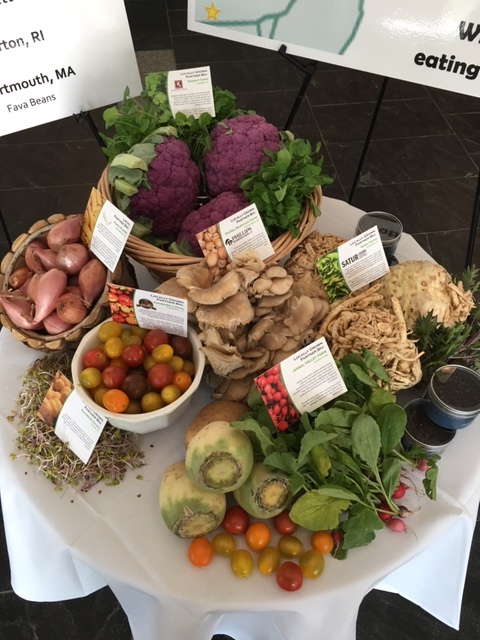Chefs from Aramark in Boston met on June 27 and 28 at Newbury College in Brookline, MA to discuss menu trends, culinary innovation, and sustainable ingredients. Thank you to Newbury College for donating the Mitten House Kitchen facilities for this summit!
Randy Sherman, Berklee College
Jessica Albright, New England Conservatory
Peter Metcalfe, Regis College
Alex Fernandez, Newbury College
Adam Poitras, Fisher College
Mark Oshiro, Boston University
Our program began with a review of our culinary philosophy and review of GOE, Channel Growth, and OpX menu resources.
The Chefs formed teams of two and cooked a mystery basket for each other. The purpose of this exercise was to collaborate on innovative food delivery and flavor profiles. Teams had access to a common pantry of produce, dairy and grocery items. A mystery basket of items will also be provided.
Mystery Basket included: Du Puy Lentils, Organic Turkish Figs, Quark, English Breakfast Radish, NY Native Garlic Scapes, Pork Belly, Spanish Mackerel, and Bell & Evans Cornish Game Hen
The logistics and requirements for the Mystery Basket are as follows:
After a tour of the kitchen and a review of the mystery ingredients, you will write your menu and submit. The menu criteria is 3 Courses
- an hors d'oeuvre or canape appropriate for an upscale cocktail party
- non-leafy green, appetizer or composed salad
- a plated entree with appropriate accompaniments, sauces and/or garnishes
Please serve (12) twelve identical pieces of your hors d'oeurve on a cocktail platter and (4) four identical portions of each plated course to be presented one after the other in proper sequence restaurant style. You have up to three (3) hours to produce this meal.
Please remember that Aramark places great value on the physical safety of our employees. Chefs were asked to please come with chef coat, hat, slip resistant footwear, and a cutting glove.
Your goal is to show culinary expertise, kitchen presence, respect for proper food handling techniques and safety. Here is what we are looking for and if achieved a recipe for success;
- A methodical approach to menu writing
- Authentic approach to global flavors
- Appreciation for simple, local comfort food
- Creative on Trend approach to Presentation
Chef Mark Benanchietti, PCIII from MIT joined us for the critique.
Here is what the team created:
Plates by Chef Alex Fernandez, Newbury College
Plates by Chef Peter Metcalfe, Regis College and Chef Adam Poitras, Fisher College
Plates from Chef Randy Sherman, Berklee College and Chef Jessica Albright, New England Conservatory
On June 28, we were joined by Jamey Lionette, Director of Sustainable Seafood Program from Red's Best. Chefs participated in a whole fish demonstration and hands-on cooking seminar.
Aramark Higher Education is excited to partner with local fishermen to deliver sustainably sourced, premium ingredients to the campuses we serve.
...yes, Chef Alex did kiss his fish!
Here are some of the delicious dishes created by our Chefs:
After a delicious lunch we met to discuss industry trends and menu innovation. Chefs used this information to craft their fall menus. This collaborative opportunity proved very valuable to all participants!




